Cold War Military Slides
A reporter stumbled upon a treasure trove of Department of Defense slides from the 1970s and 1980s depicting data from missile systems, Soviet capabilities and America’s nuclear arsenal.
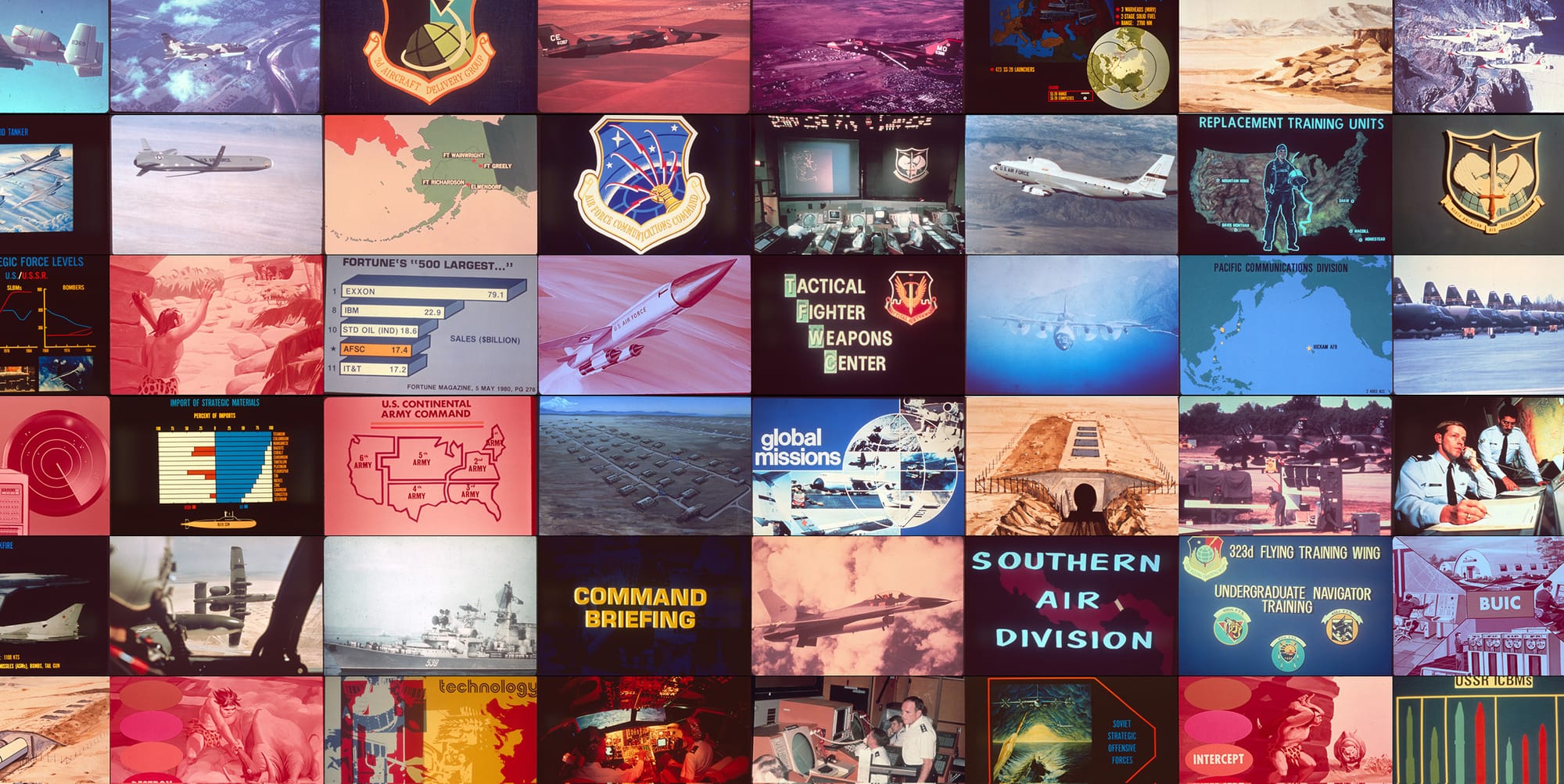
Most of the time, I find the weird government datasets featured on this site buried away in some obscure sub-agency website. Sam Biddle found some in a bunch of red plastic boxes he bought online.
The boxes were filled with hundreds of 35mm slides from the Department of Defense (DOD) which appear to be from the height of the Cold War. These chilling slides contain information about America’s nuclear forces, strategic defense plans for nuclear war and information about the Soviet Union’s military capabilities.
Sam Biddle is a fantastic reporter who covers technology, national security and privacy for The Intercept. He lucked out and stumbled upon this treasure trove of Cold War visuals while scouring eBay, and was able to buy 60 more boxes of the slides, which came from an estate sale in Albuquerque, NM. The seller told Biddle that the original owner had been an officer at Kirtland Air Force Base.
Heroically, Biddle has been scanning these amazing slides one-by-one and uploading them to the Internet Archive. So far he has posted 400 of what he calls “The Slides”.
In a blog post describing his archiving project, Biddle wrote:
“The Slides are incredible as well for their visual thoughtfulness, no matter the craziness or foolishness of the underlying idea. They are the perfect inverse of contemporary Pentagon graphic design in all its sprawling insanity, permanently poisoned by the vernacular of PowerPoint and clip art.”
These slides are indeed visually rich, and they remind me of a terrifying time in America. Any kid who was in elementary school when War Games and The Day After came out probably feels the same way.
My Dad worked as an engineer on part of the MX Missile (officially known as LGM-118 Peacekeeper), a nuclear intercontinental ballistic missile (ICBM). The bold, geometric graphic design of the slide series covering the MX looks like it was for a video game in a 1980’s arcade, rather than a city-vaporizing nuke.
There are org charts, photos of command centers, illustrations of ominous submarines and strategic bombers, and many emblems for different Air Force commands. I sifted through all of these photos, which Biddle placed in the public domain, and are free to download at the Internet Archive.
Nuclear Data Viz
Considering how big the stakes were, the way data were presented to top decision makers in the US nuclear chain of command was kind of wild. I always marvel at how hard it must have been to draft these graphics by hand, before computer data visualization tools. Some of these are really clear, well designed, and effective. Others, not so much.
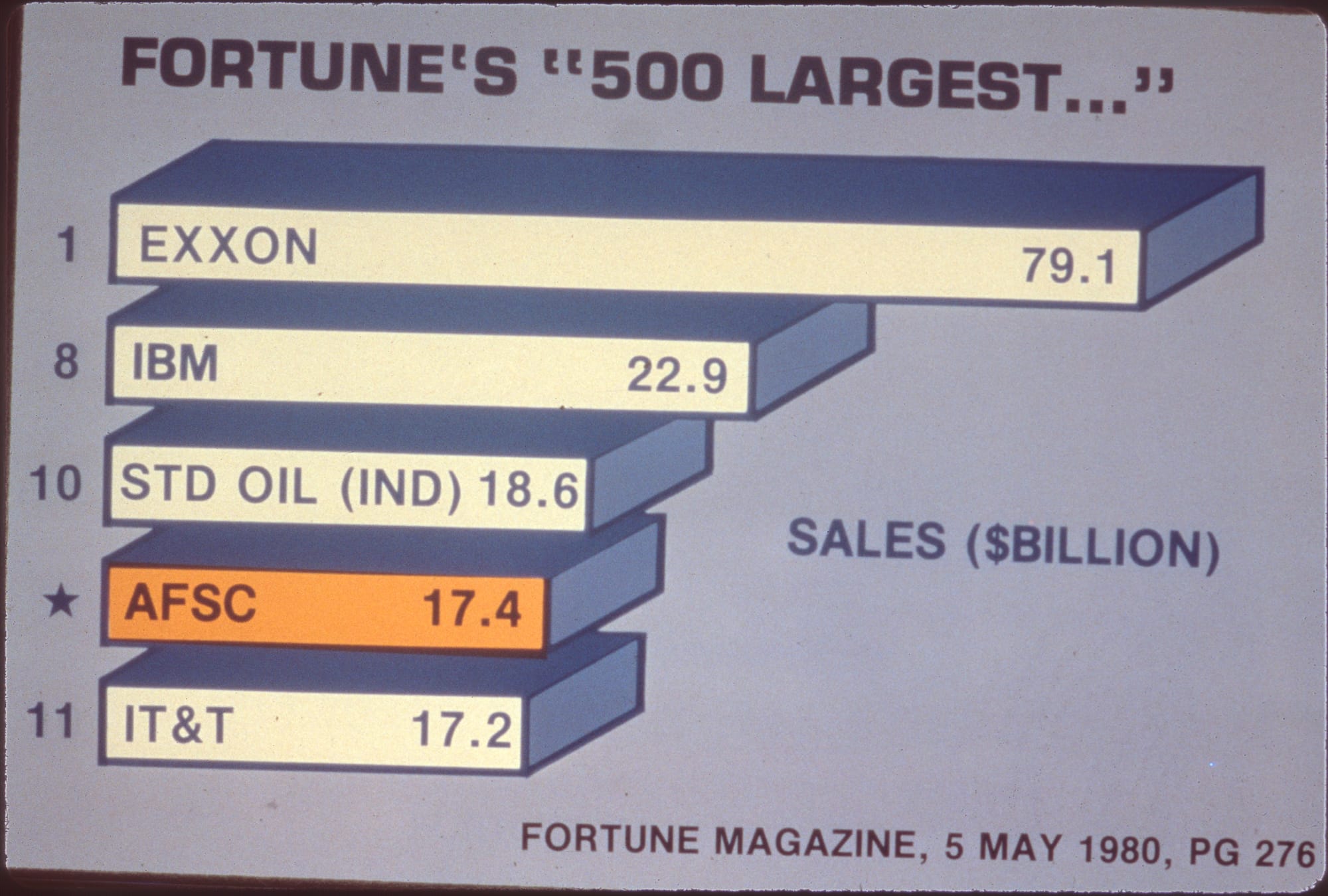

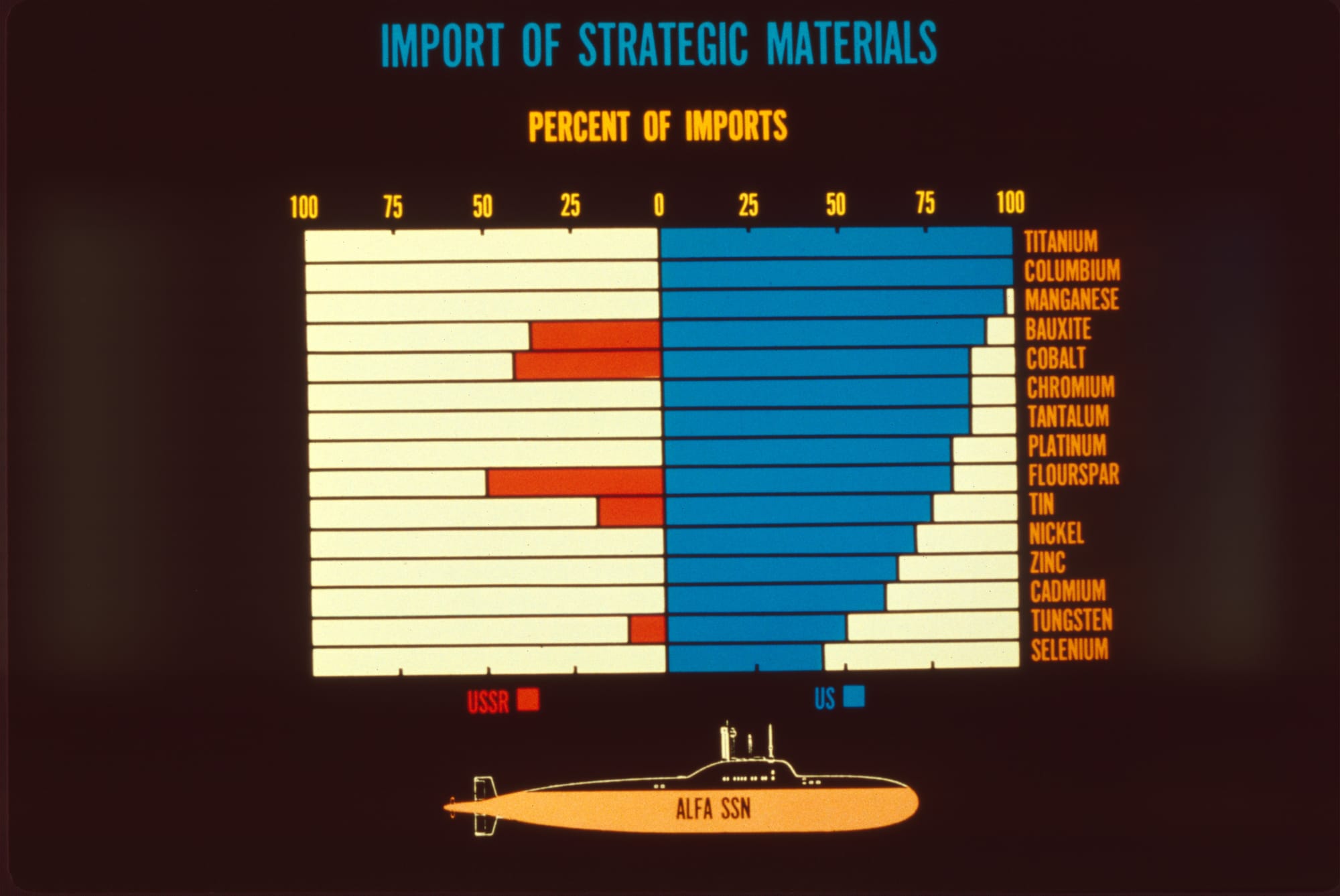
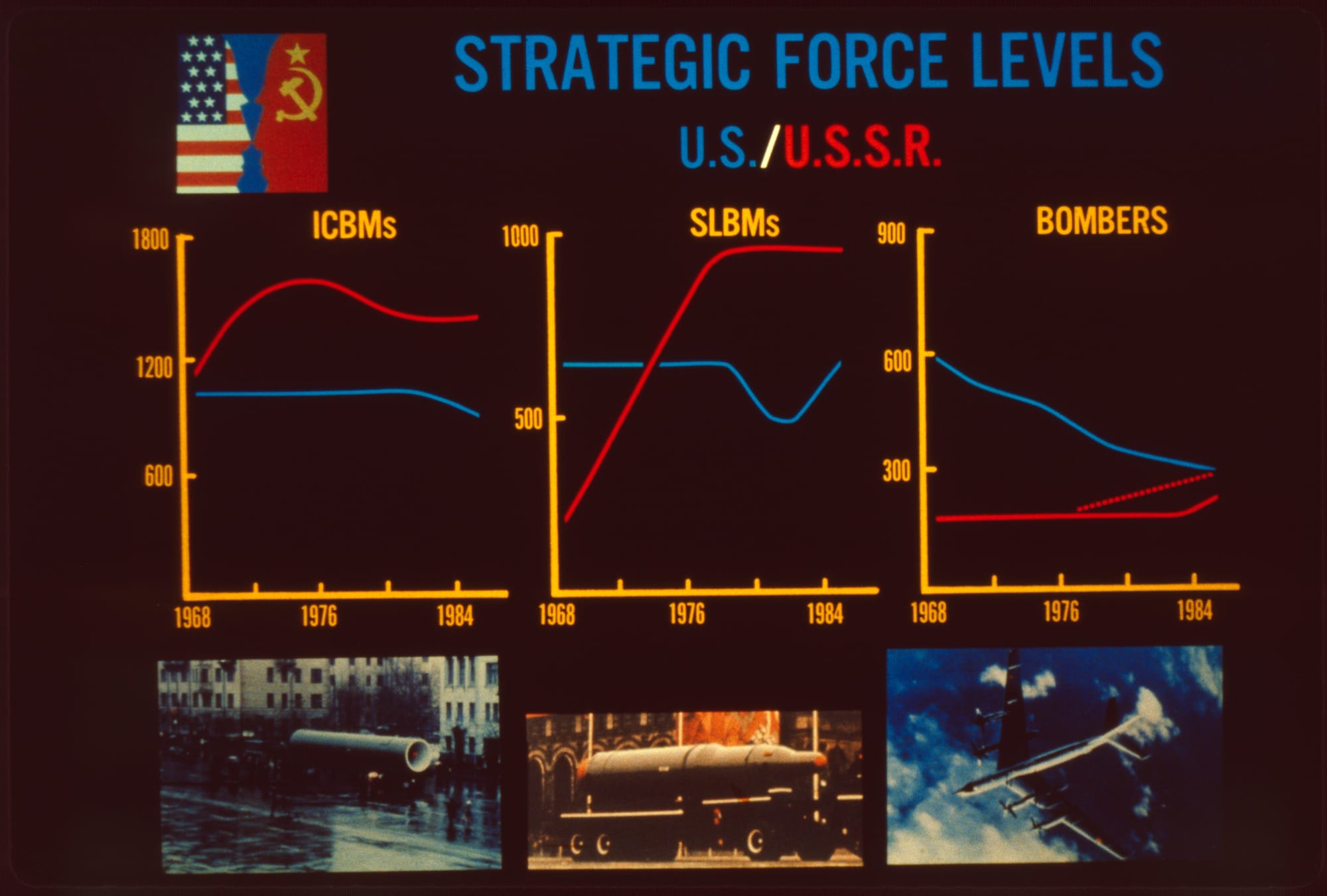

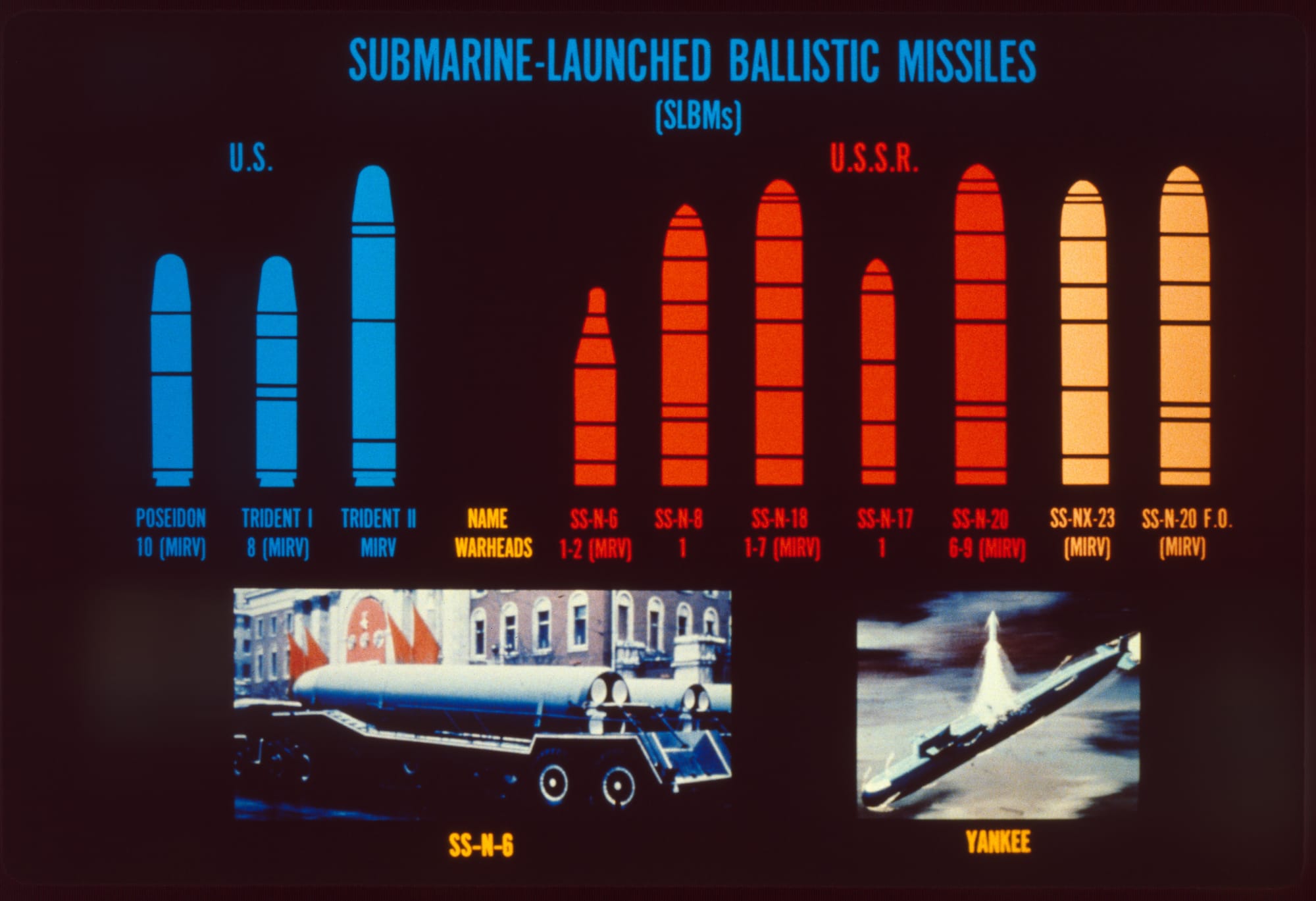
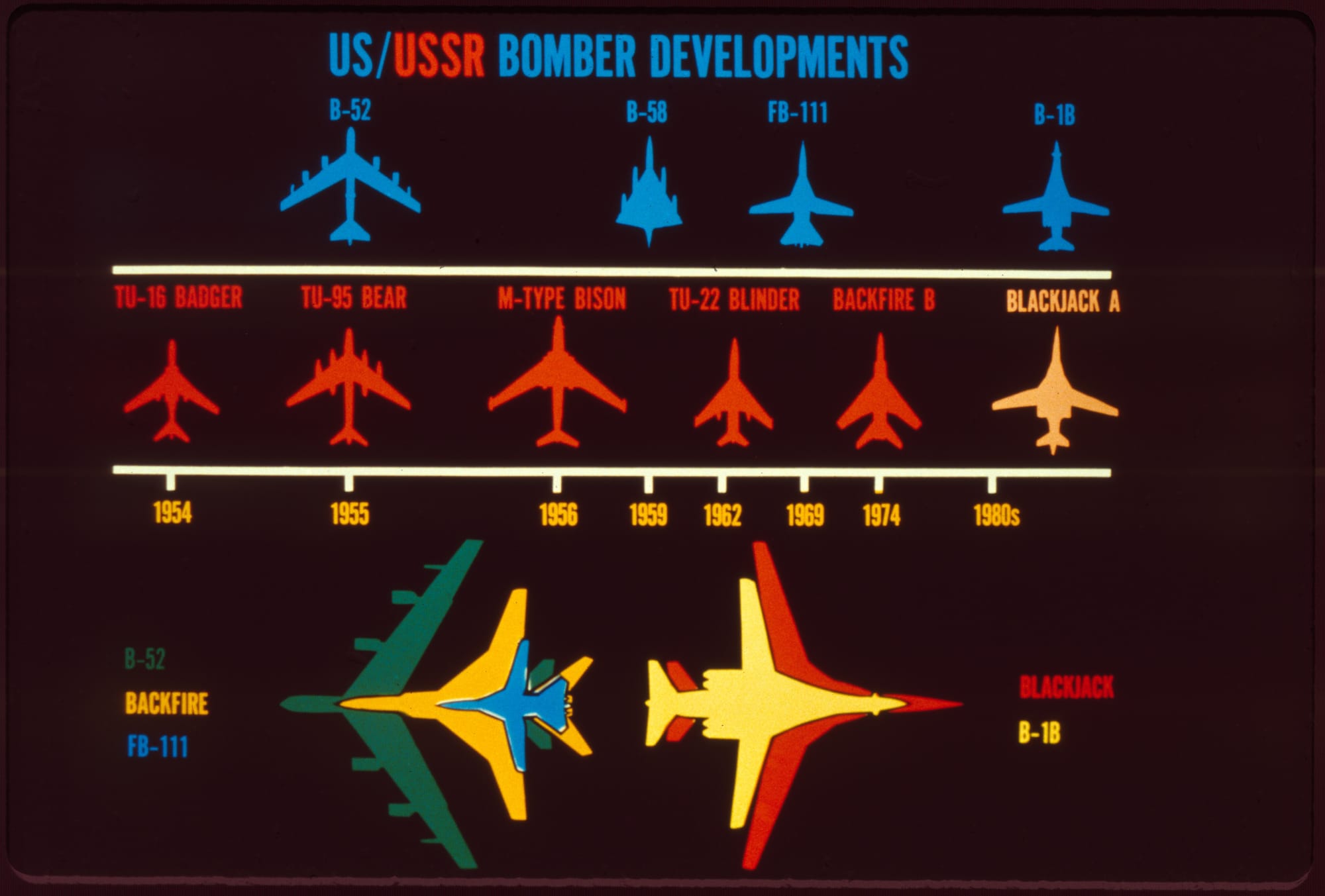
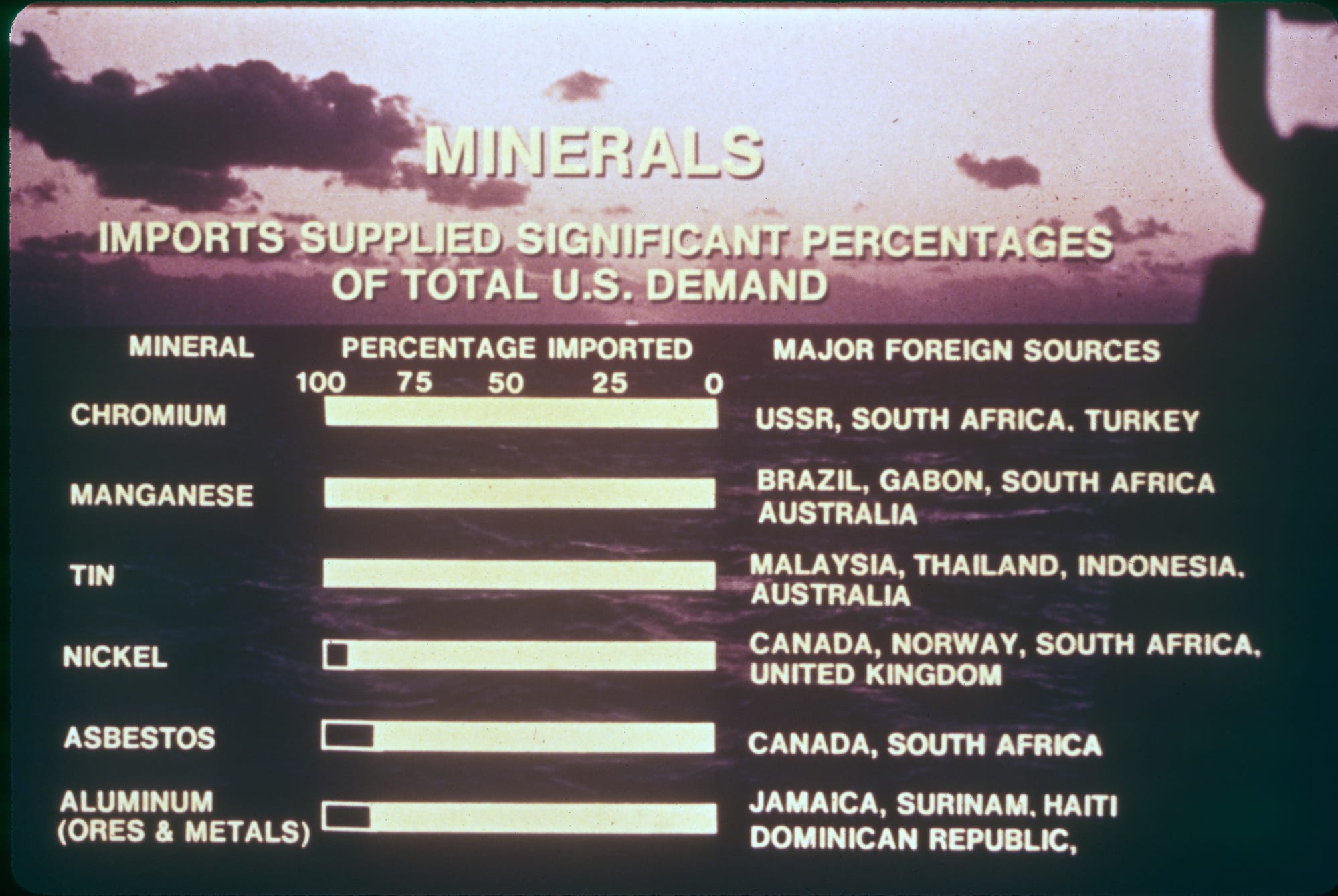

Some of the Data visualizations found in "The Slides"
Illustrations
Some of the illustrations featured in these slide decks could have come right off of an Atari 2600 game cartridge.
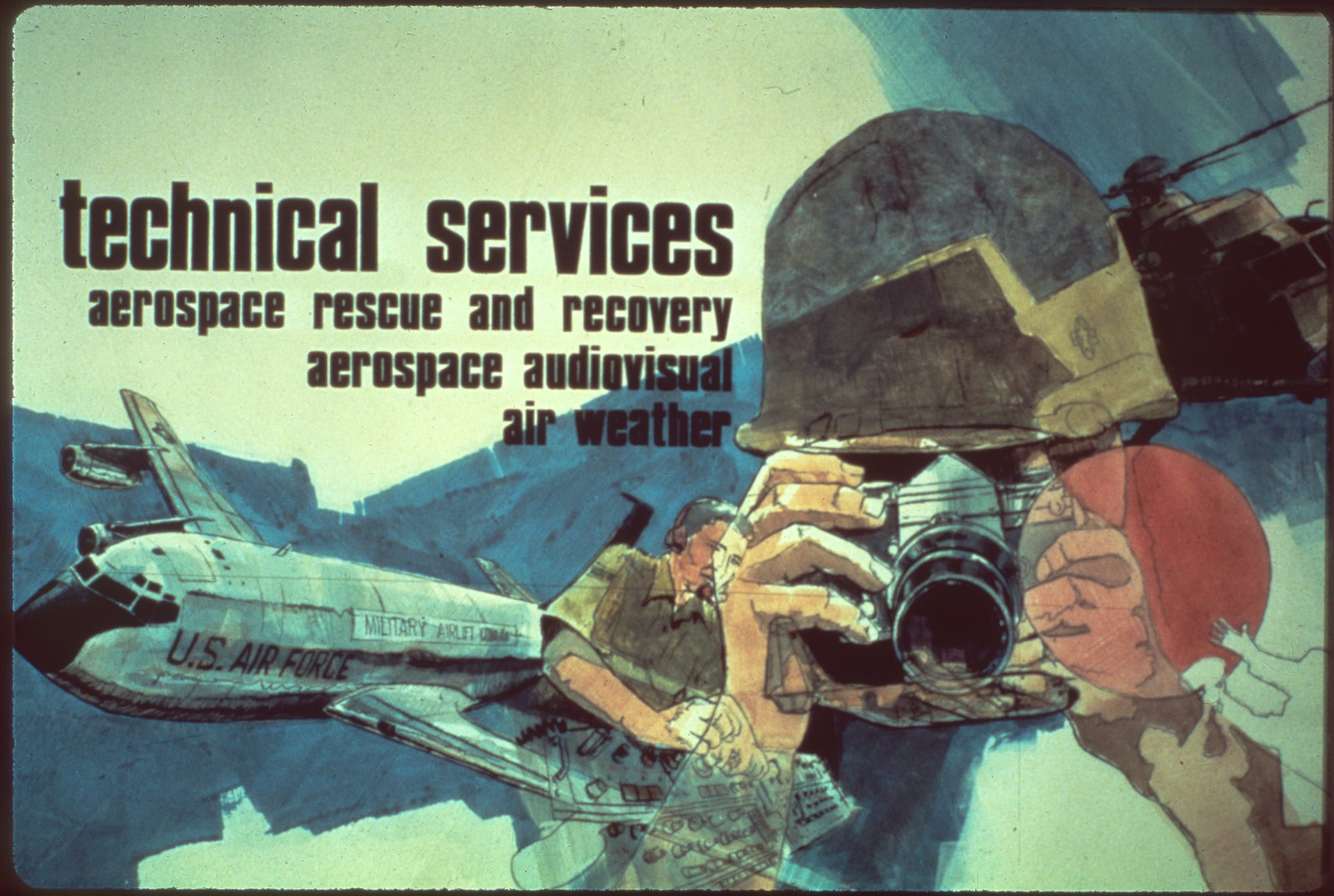


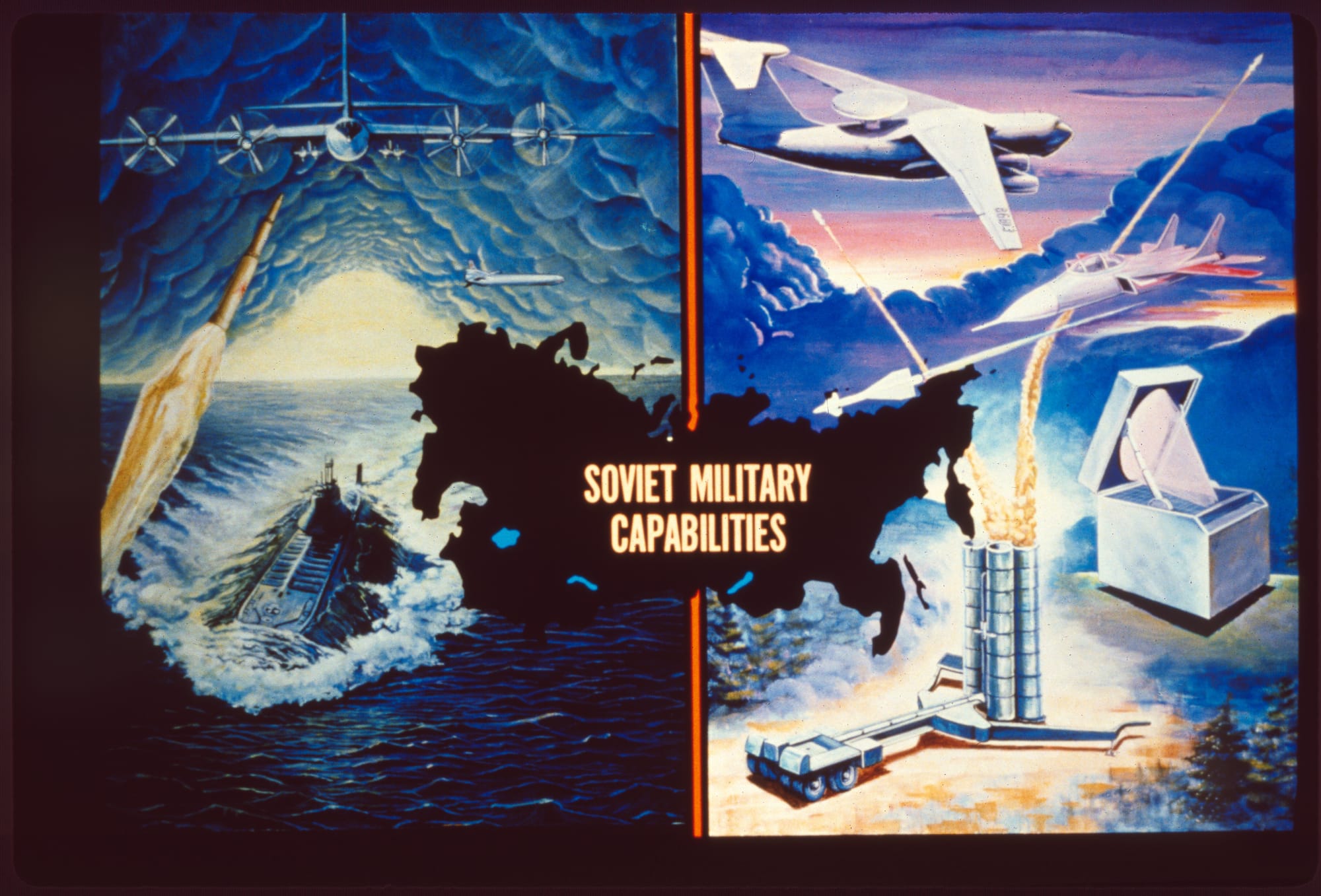

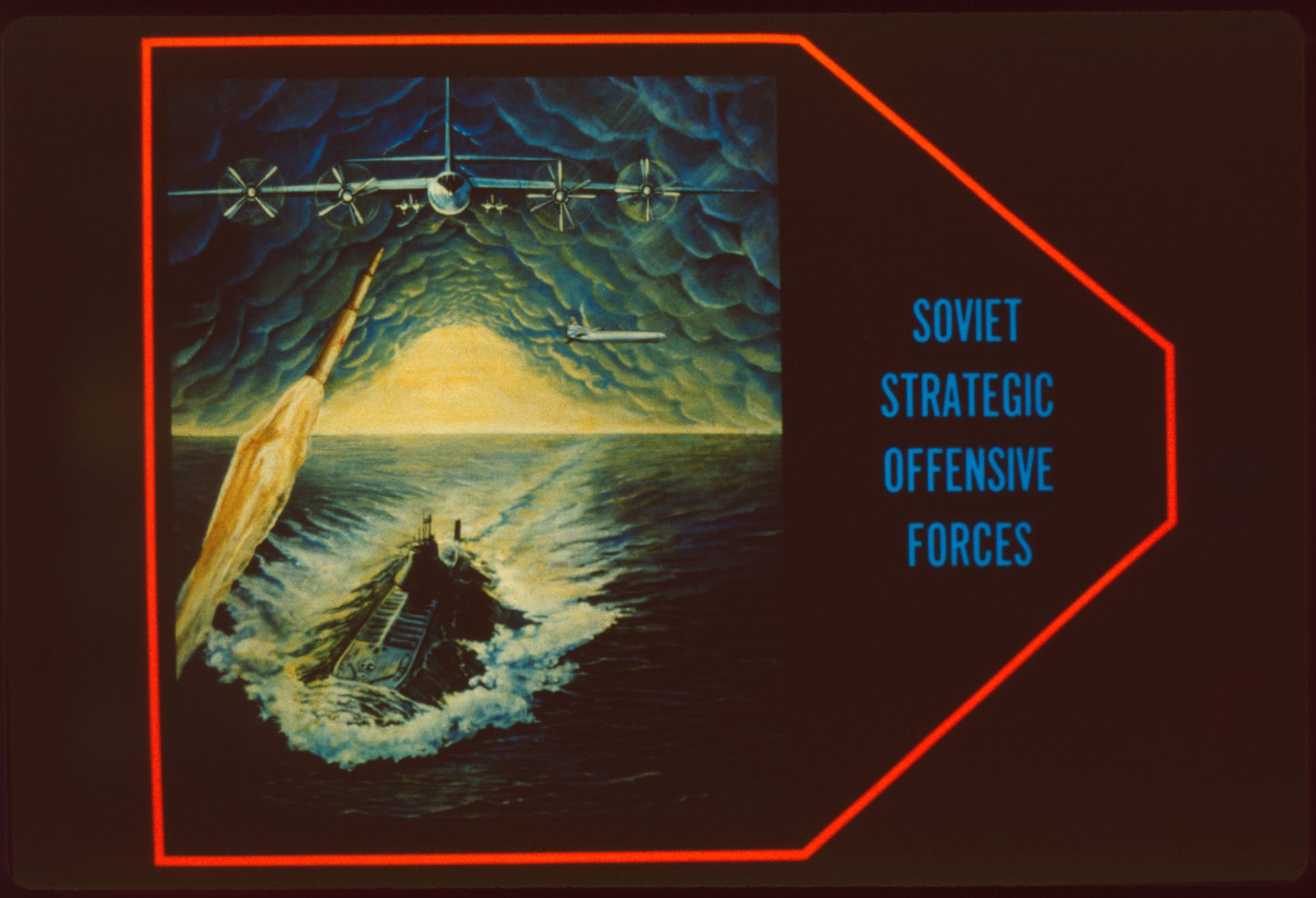
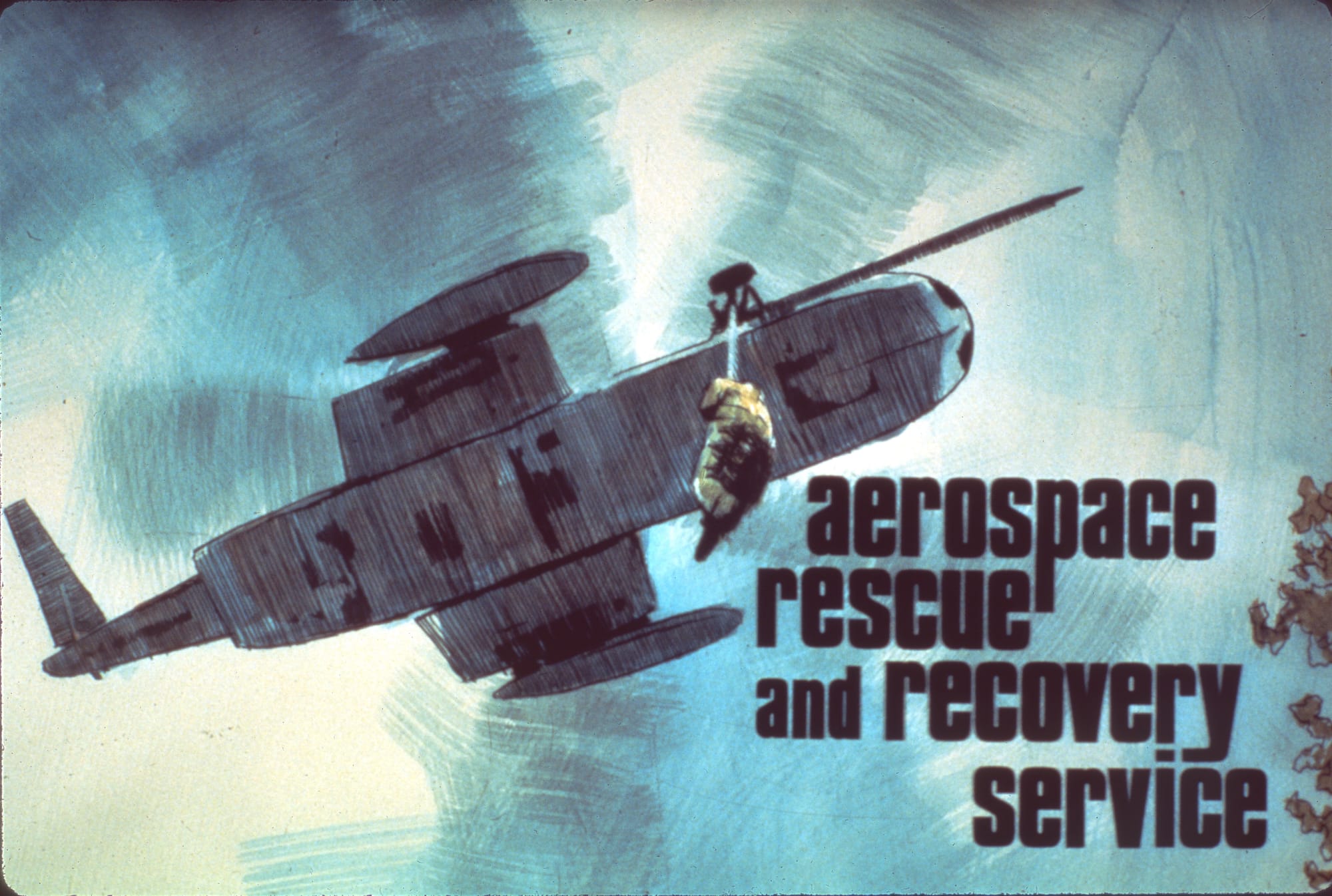


Some of the great illustrations found in "The Slides"
Maps
Most of the maps in these slides are illustrating the ways the US could have attacked the Soviet Union, or the ways they could have attacked us. Lotta “War Games“ vibes in these ones.
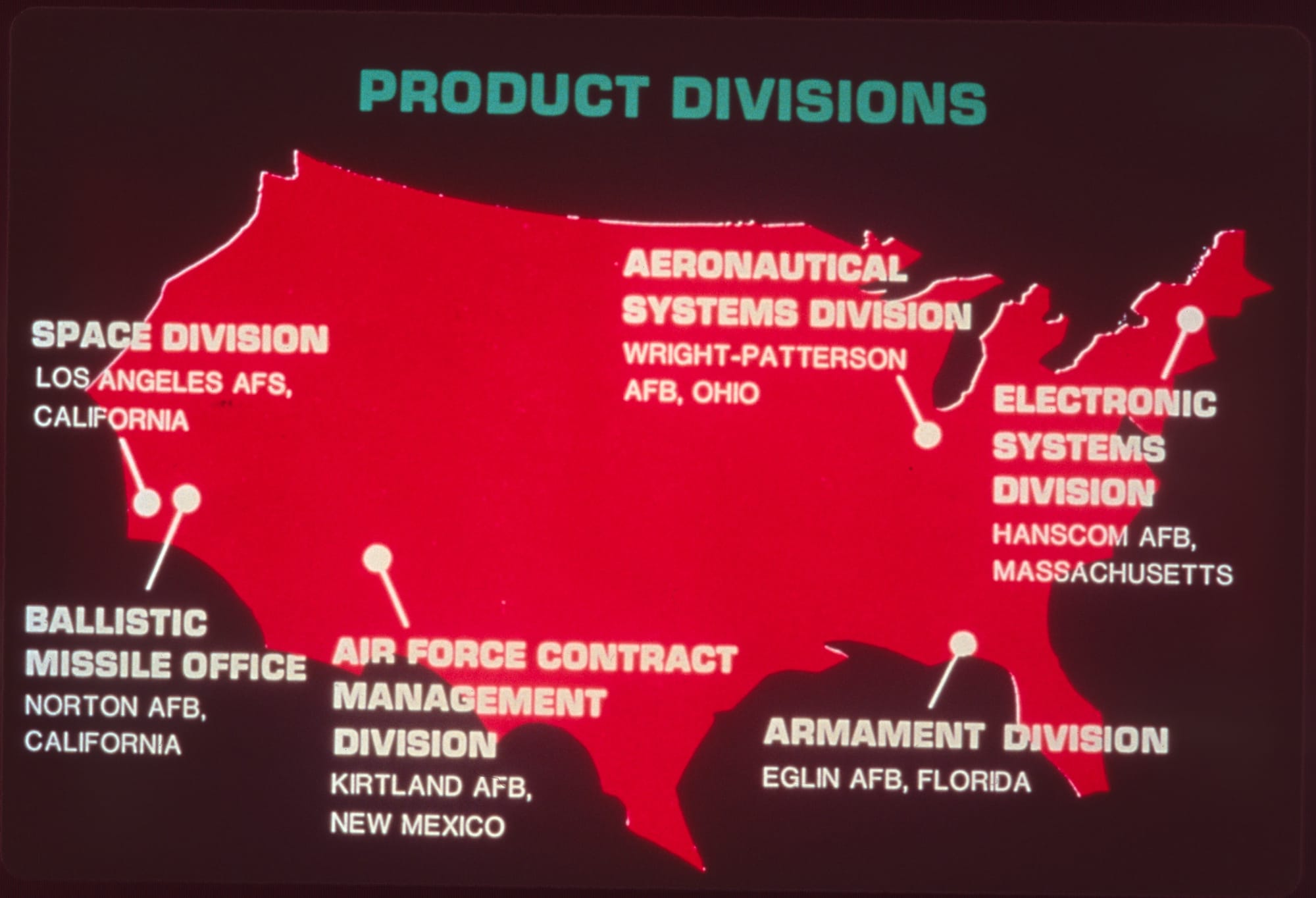
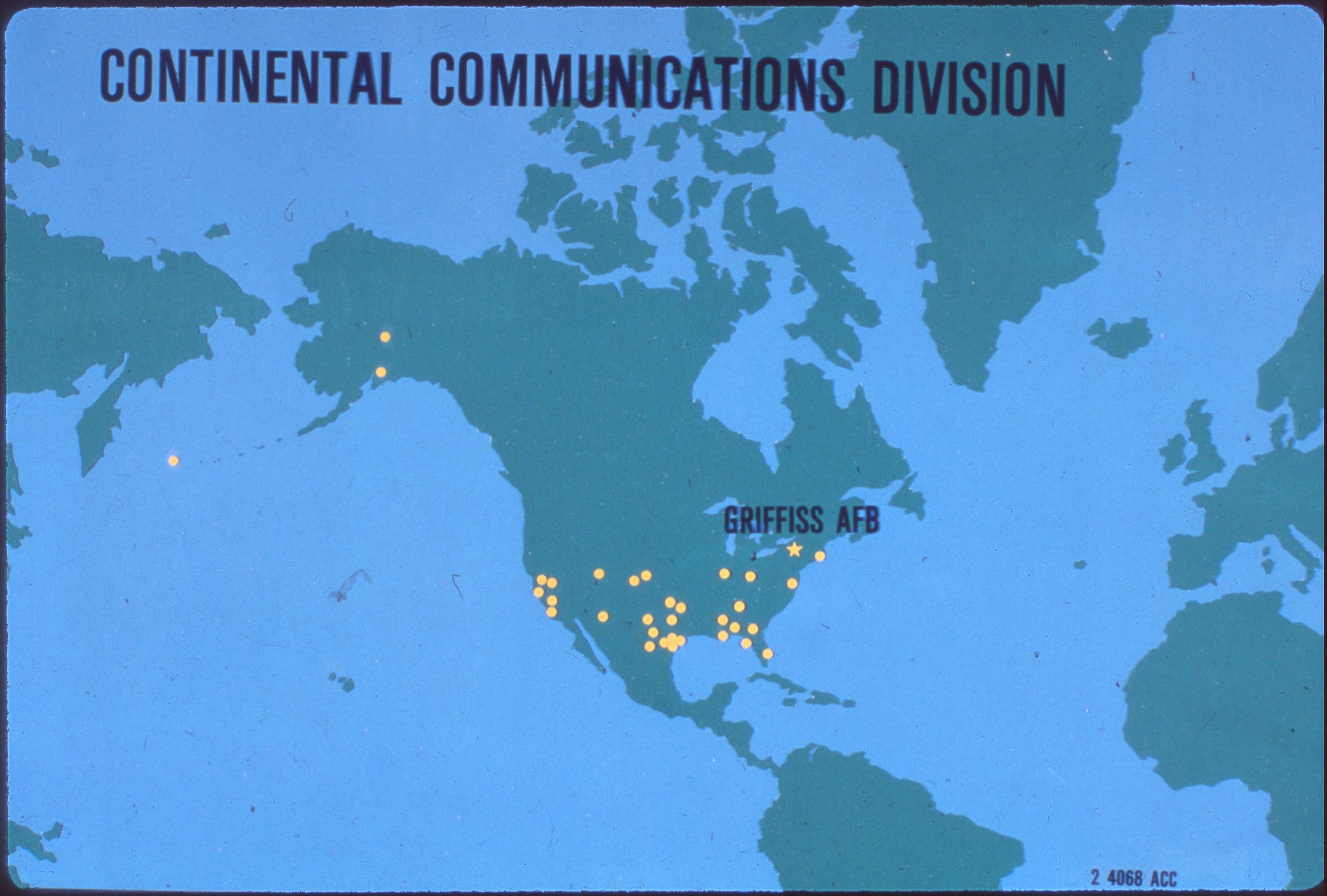



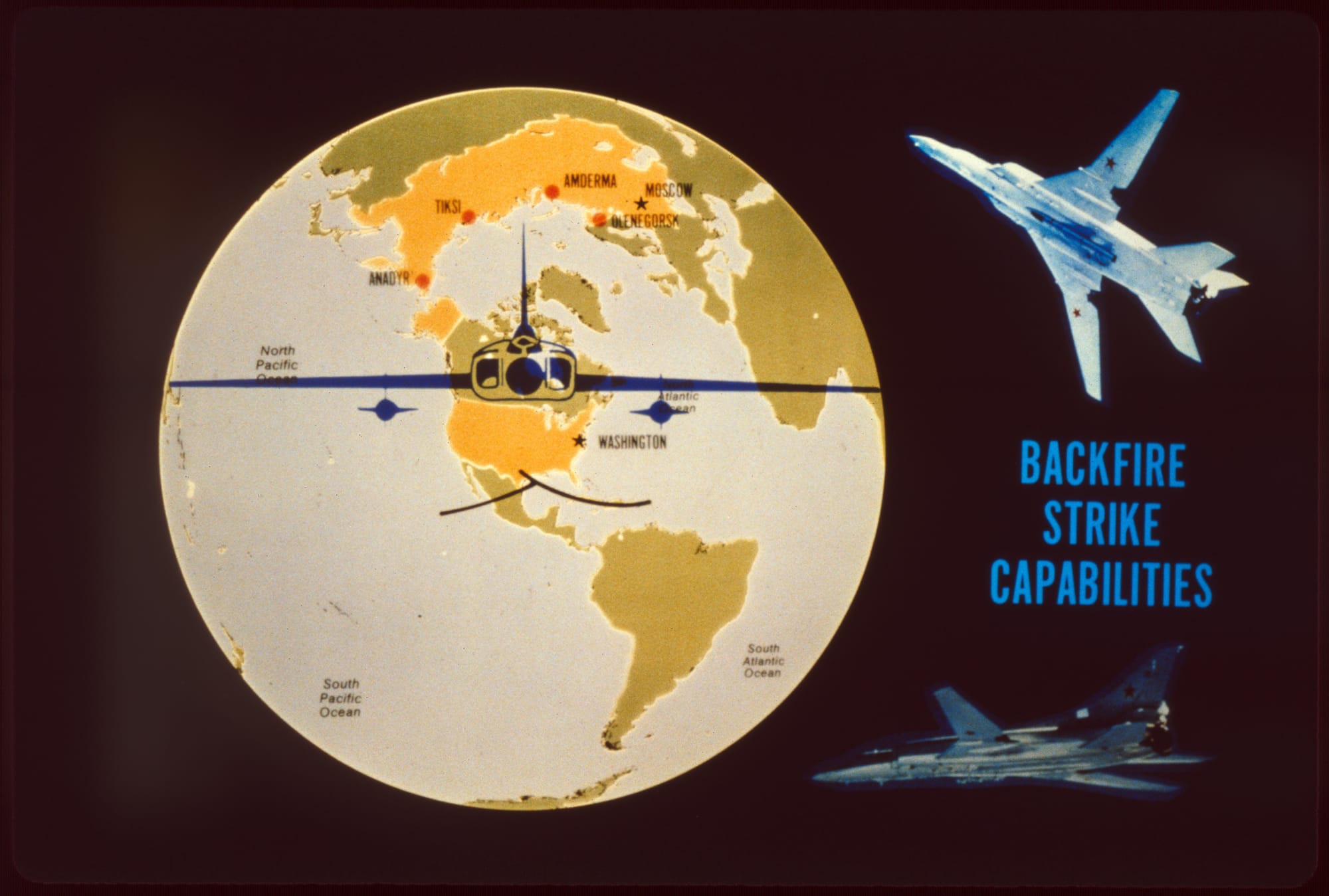
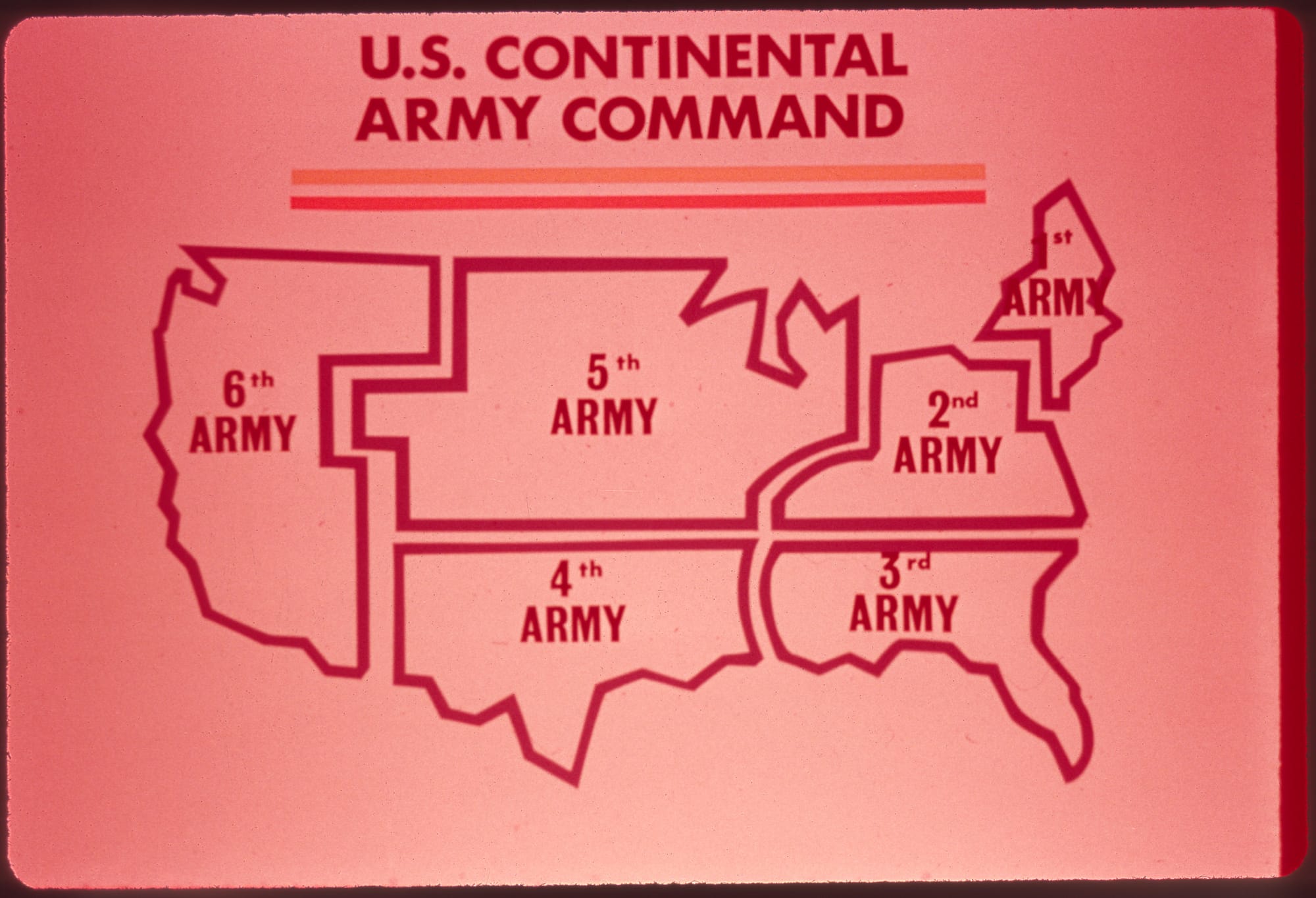
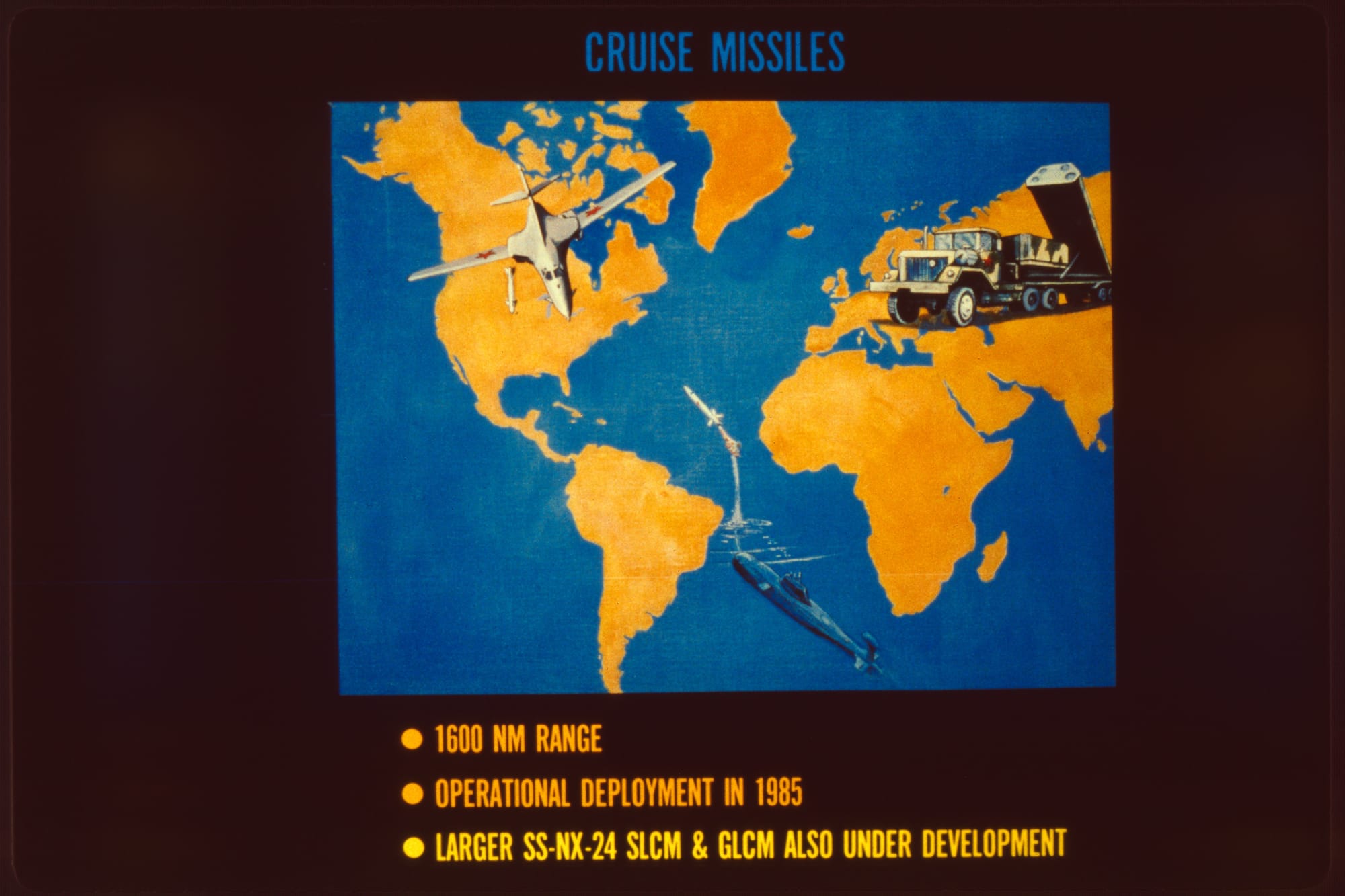
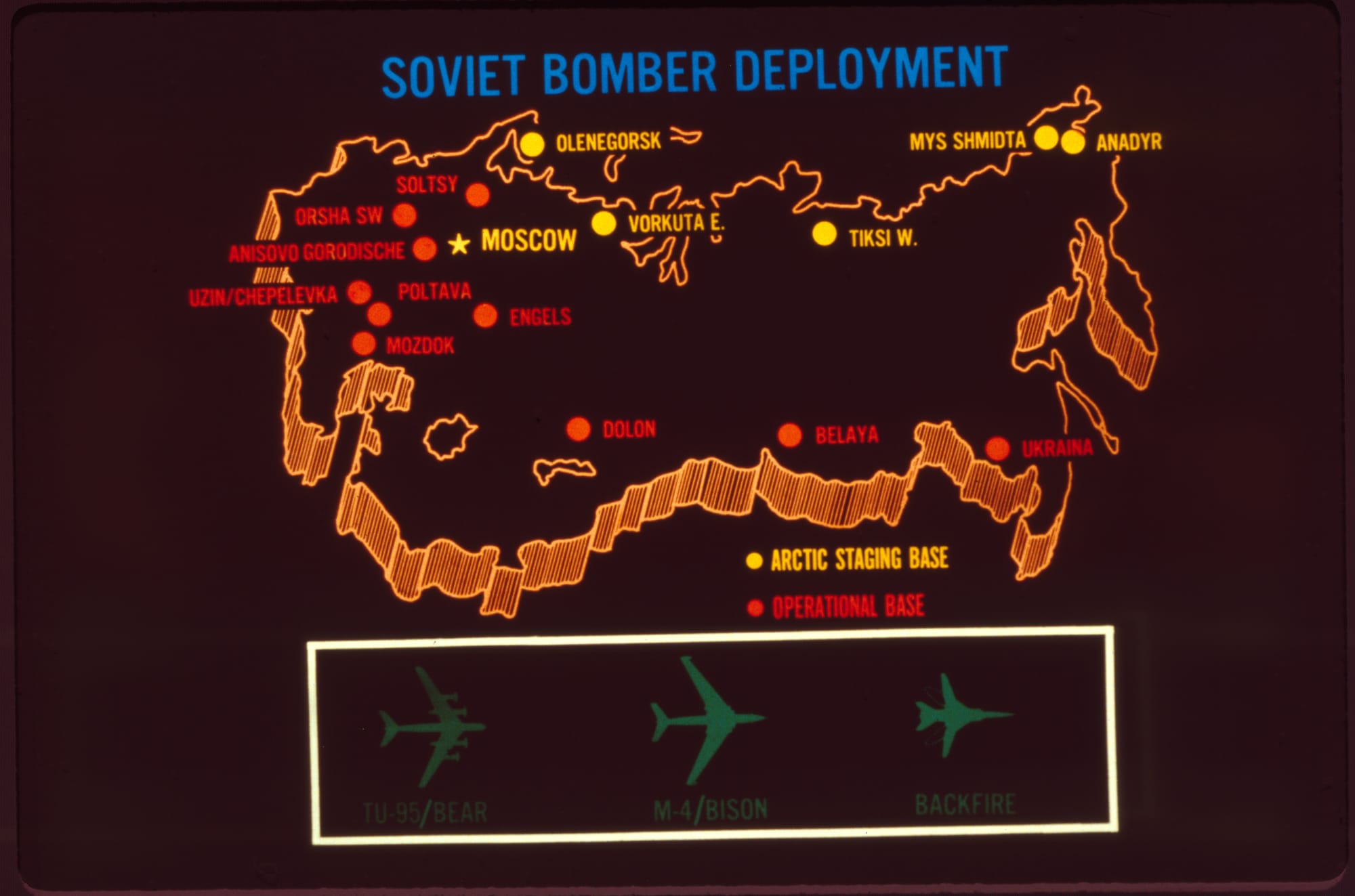
Some of the maps found in "The Slides"

Unisex Radio Frequency Chart T-shirt
This crazy, beautiful US government chart illustrates the incredible complexity of managing one of our nation’s most crucial – and invisible – national assets: the radio spectrum. Based on the NTIA's beautiful "United States Frequency Allocation Chart".
Beautiful Public Data logo in blue on the left sleeve.
Typography
You will find a lot of all-caps no-nonsense san-serif fonts like Alternate Gothic and Futura in these slides, which feels very Air Force. There’s a few slides that go big with bold OCR display fonts, and even some physical letters that appear hand-placed.
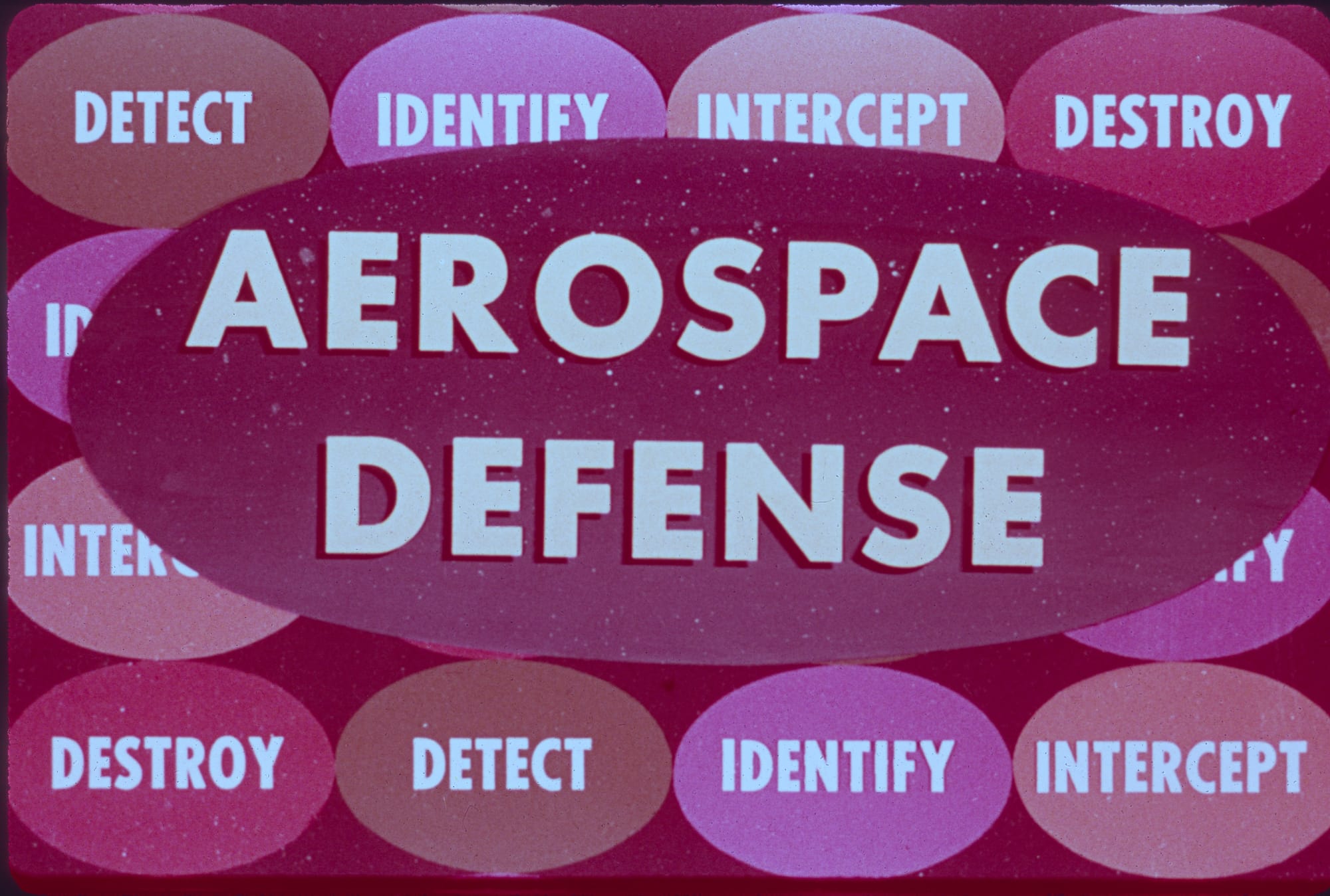
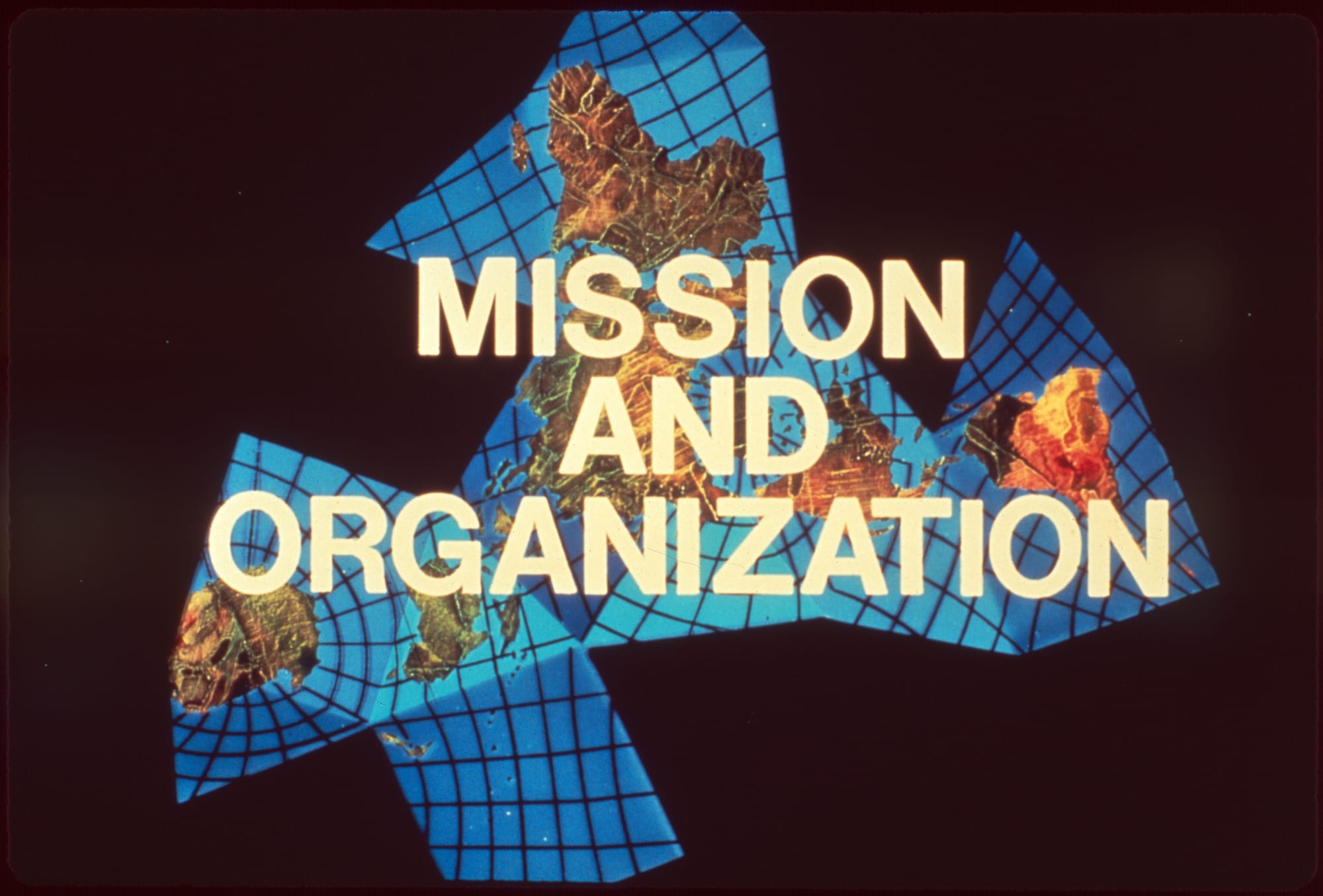

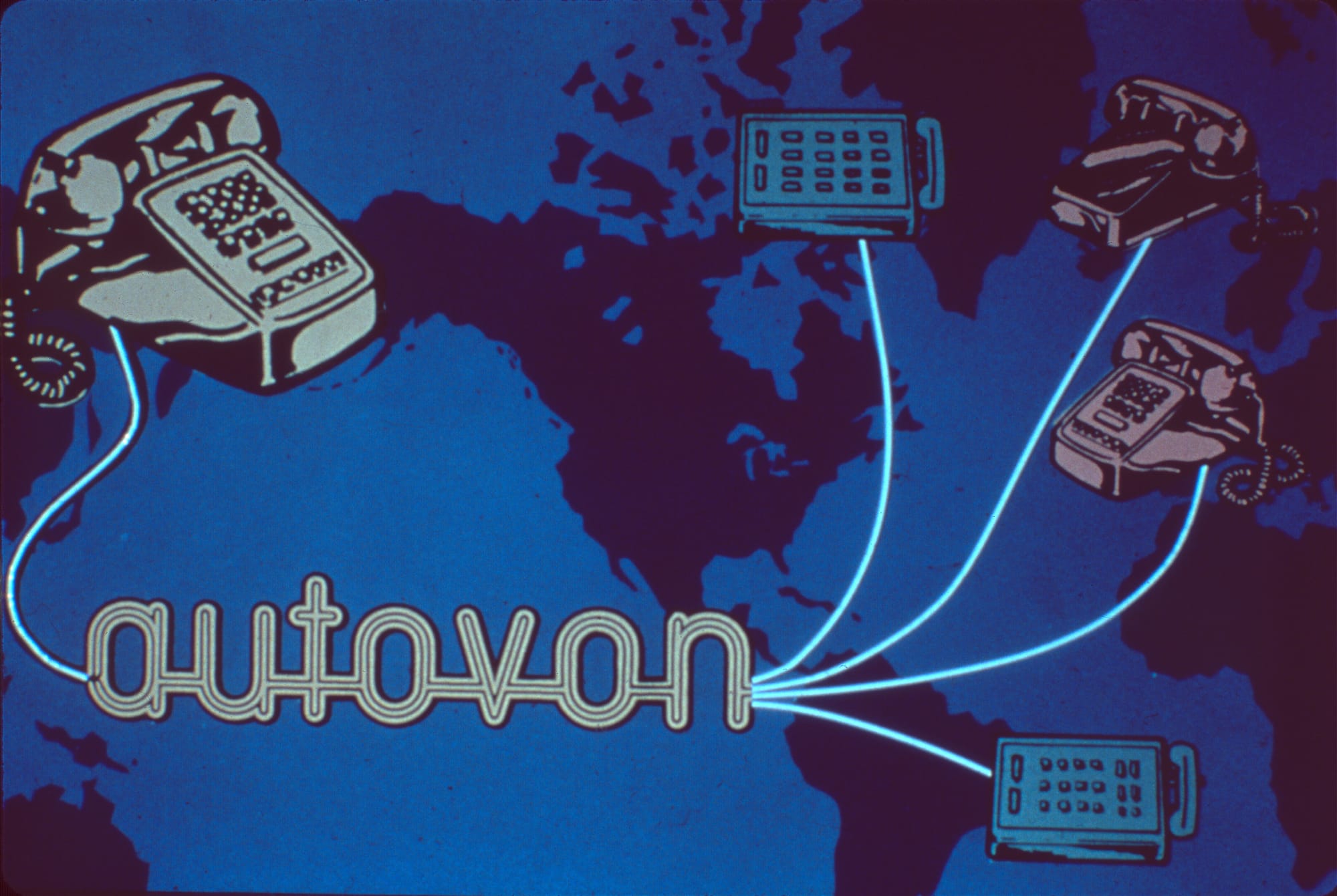

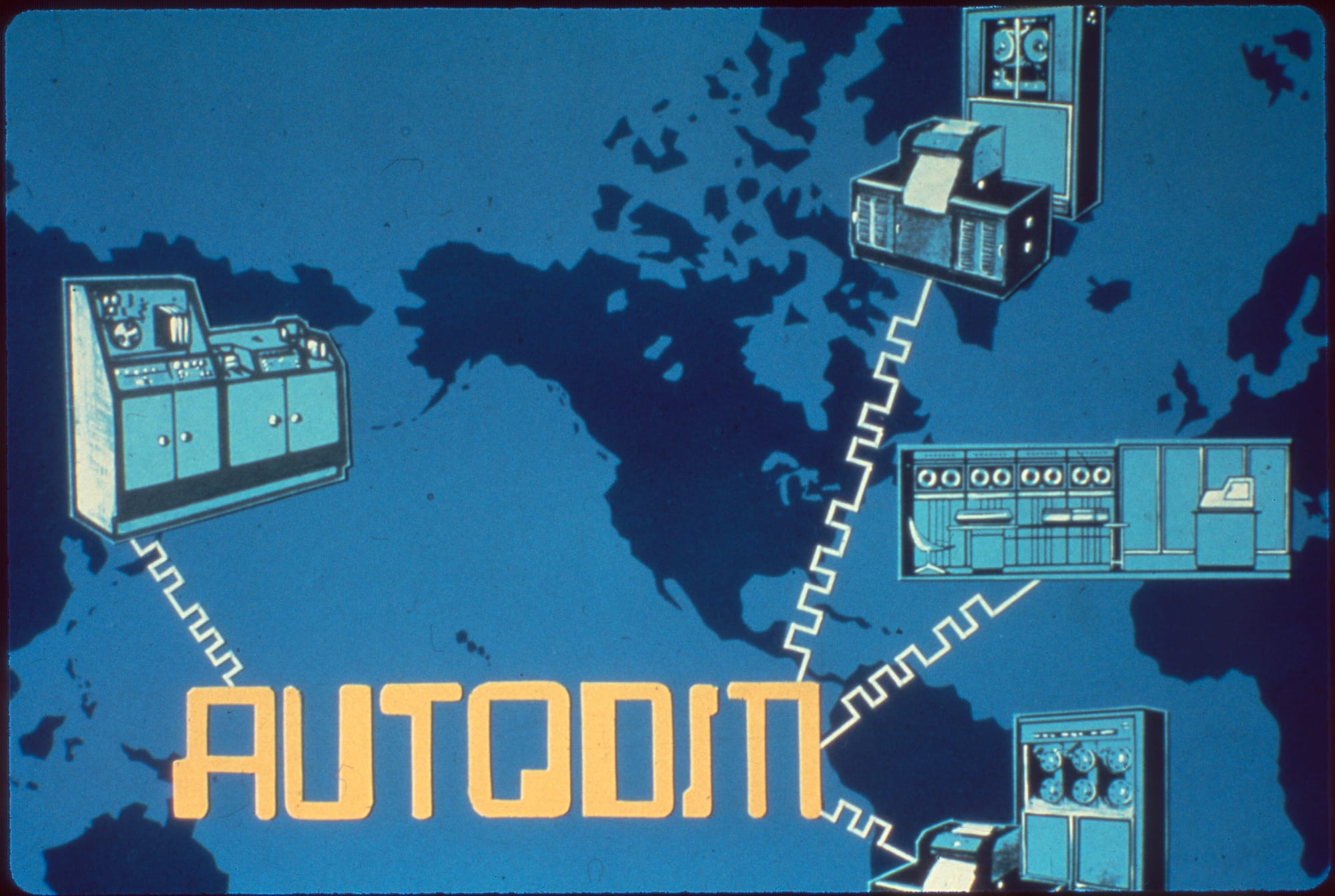

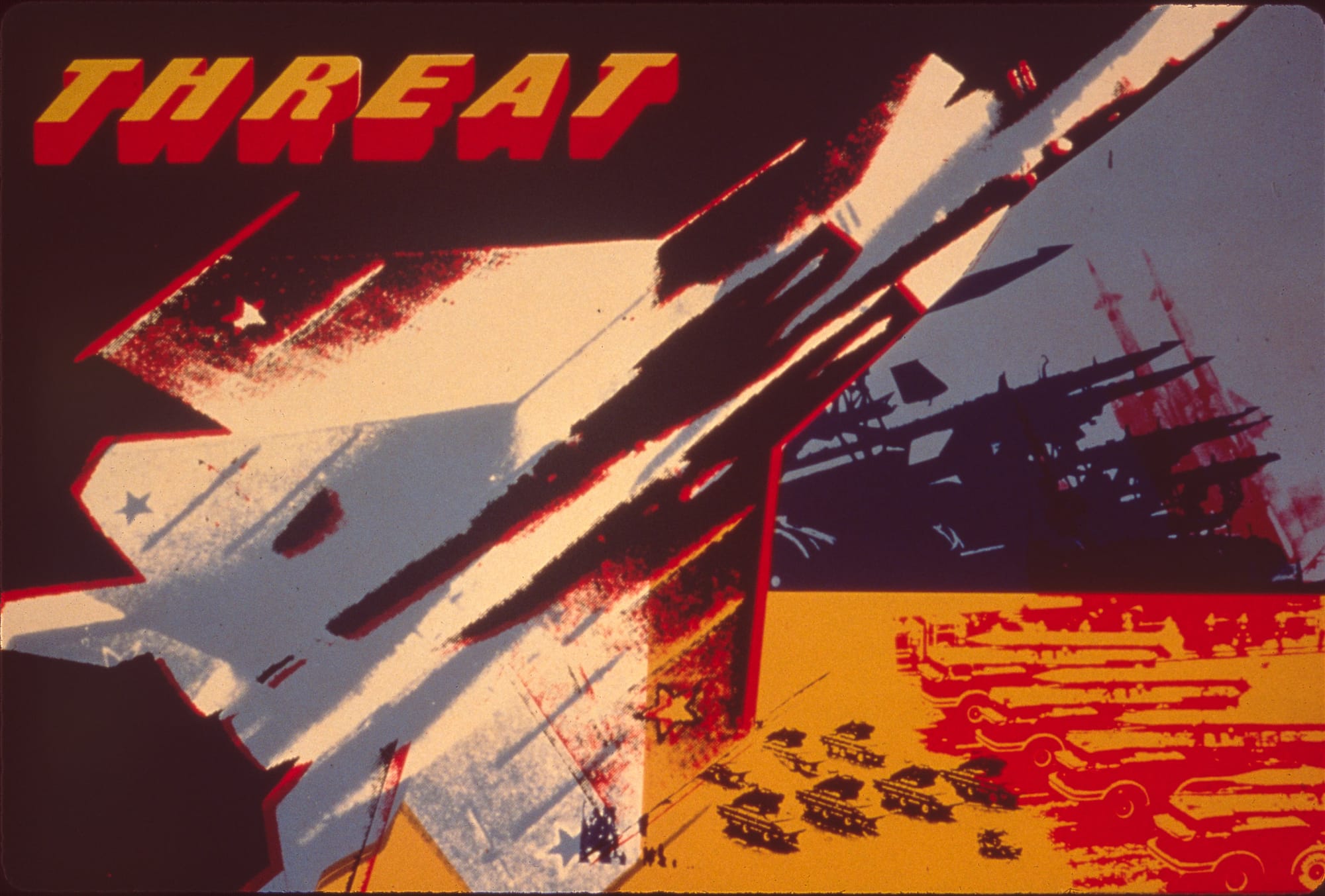

Some of the best typography found in "The Slides"
Aircraft and military hardware
Many of "The Slides" contain photography of fighter jets, radar installations and other military assets. In most cases, Biddle chose to leave the faded colors as he found them, which I think is the right choice.
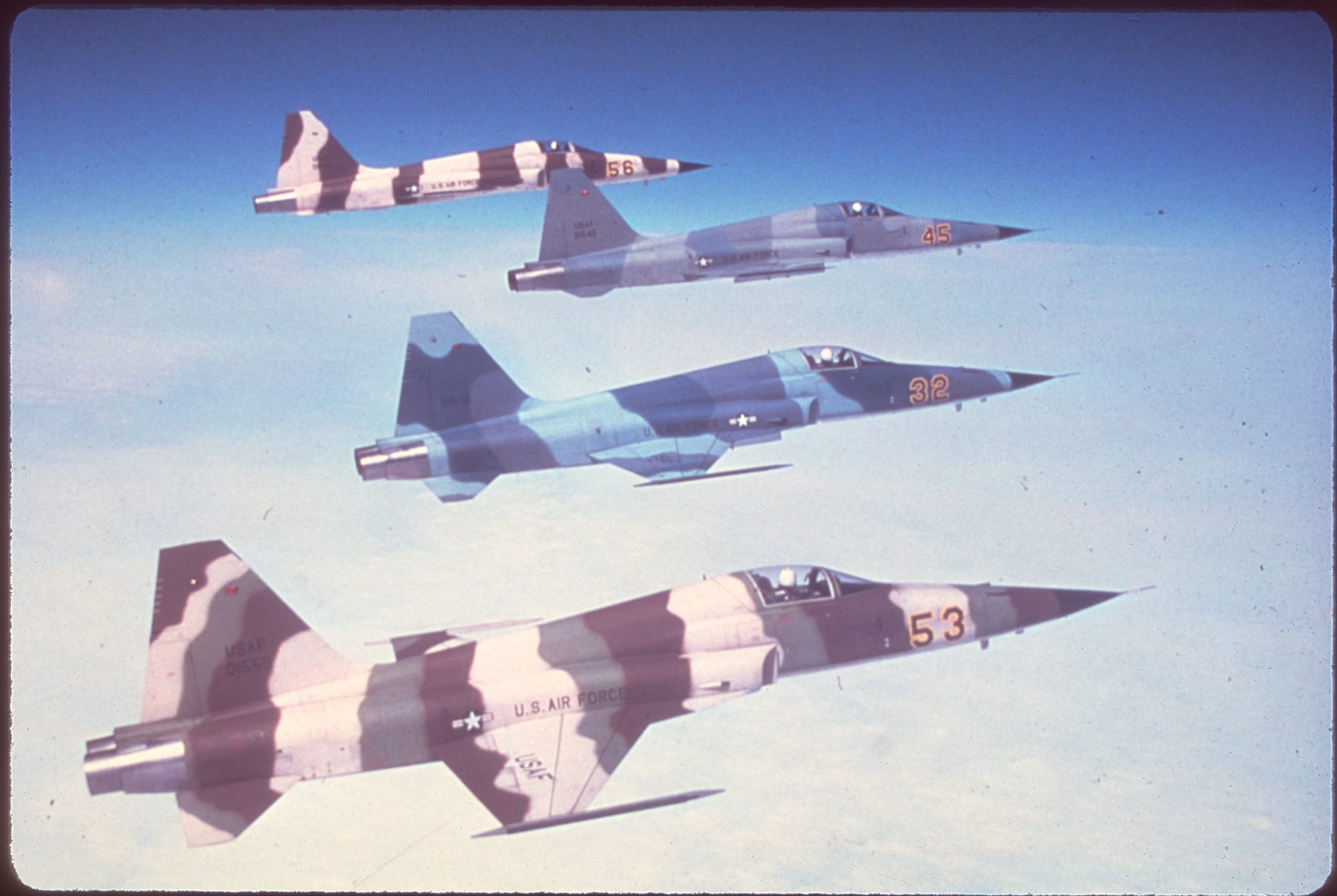
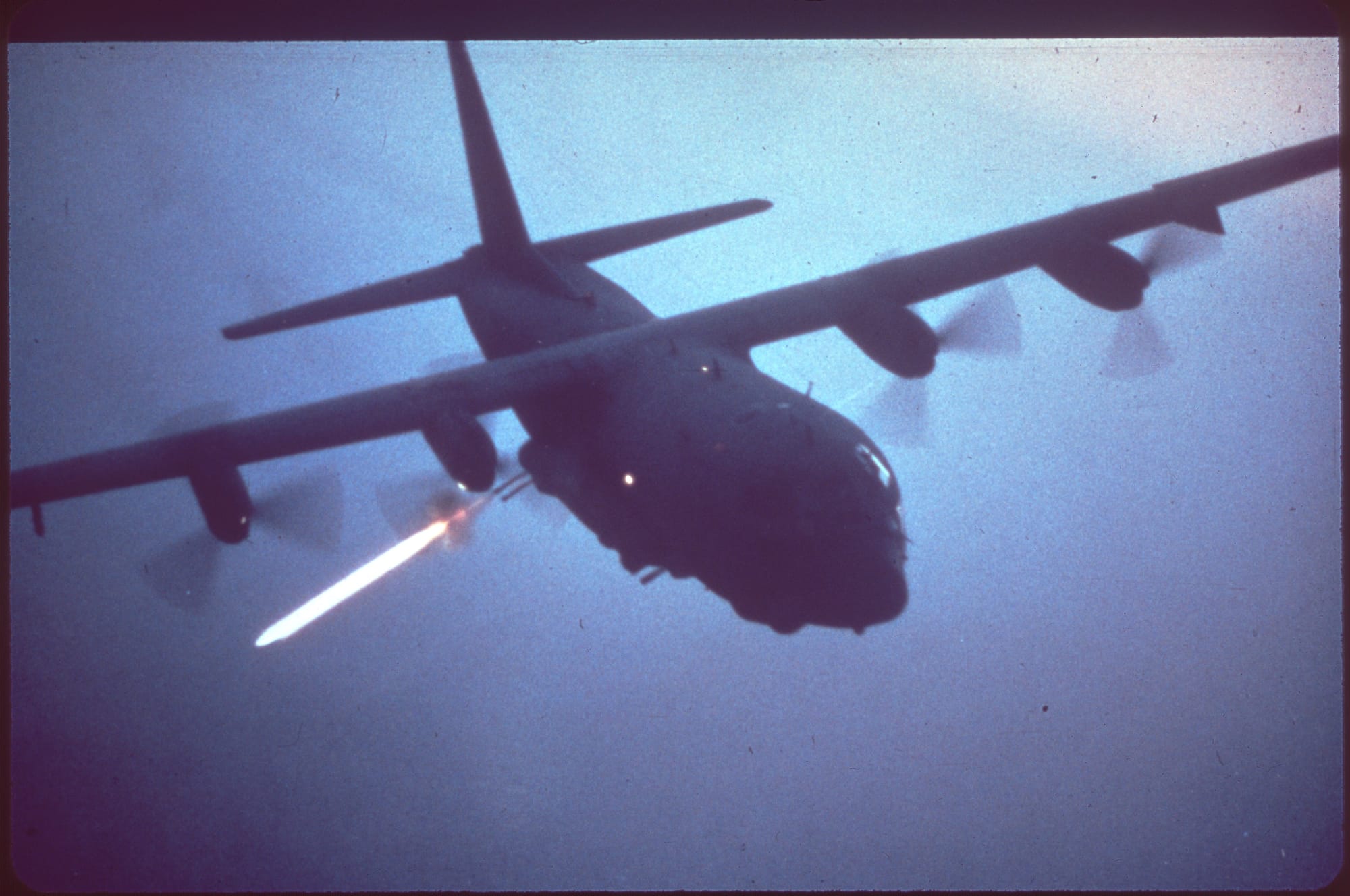
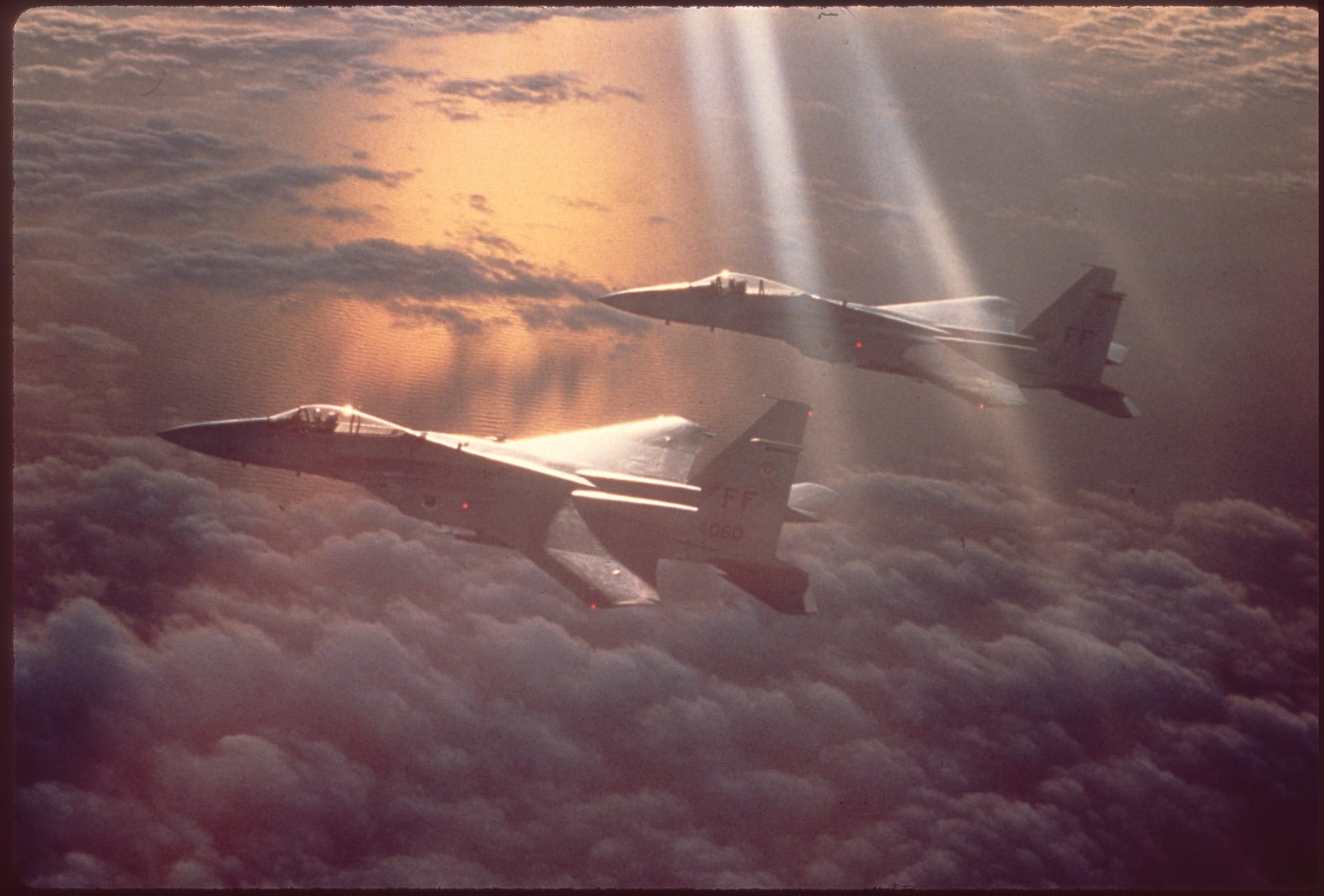
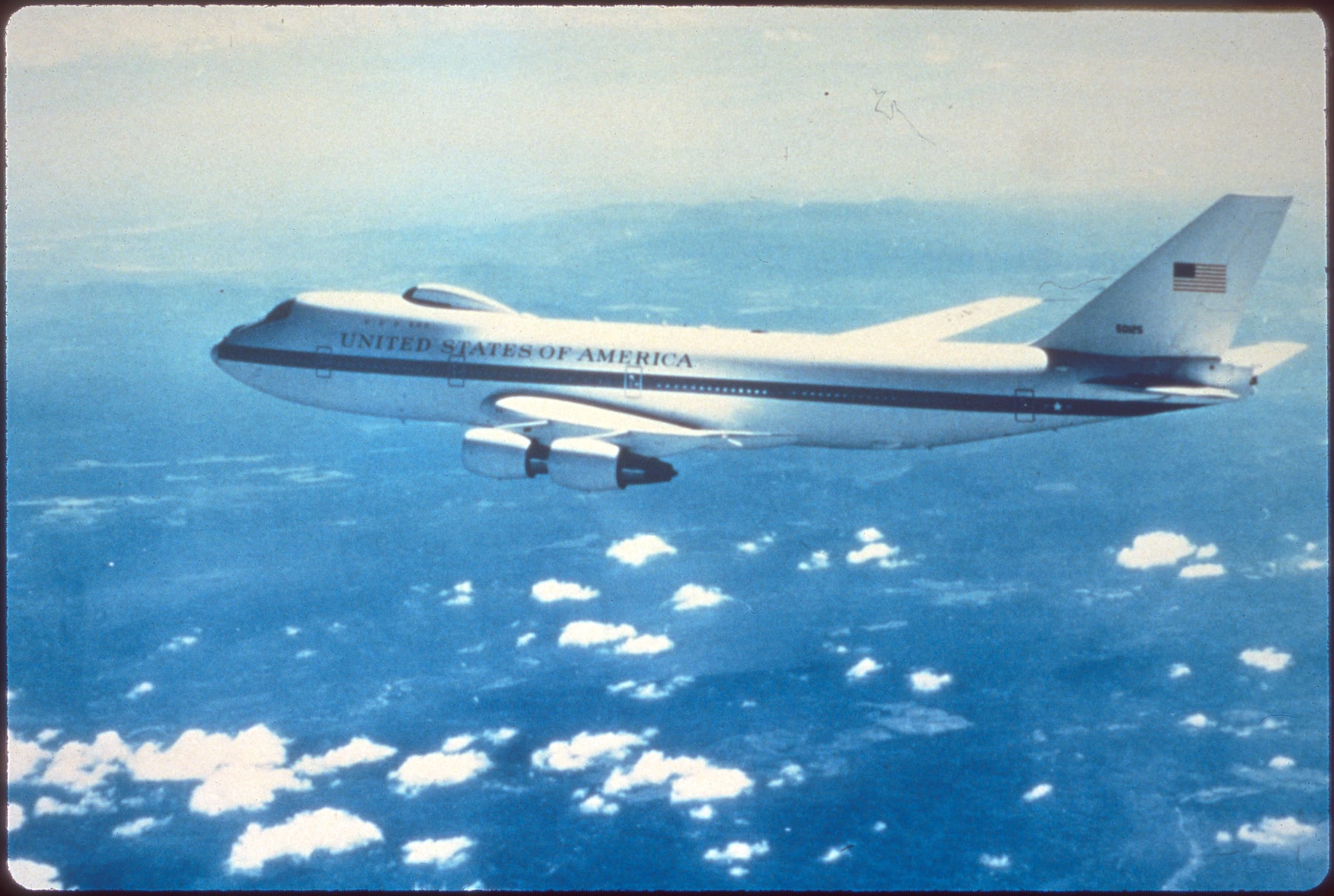
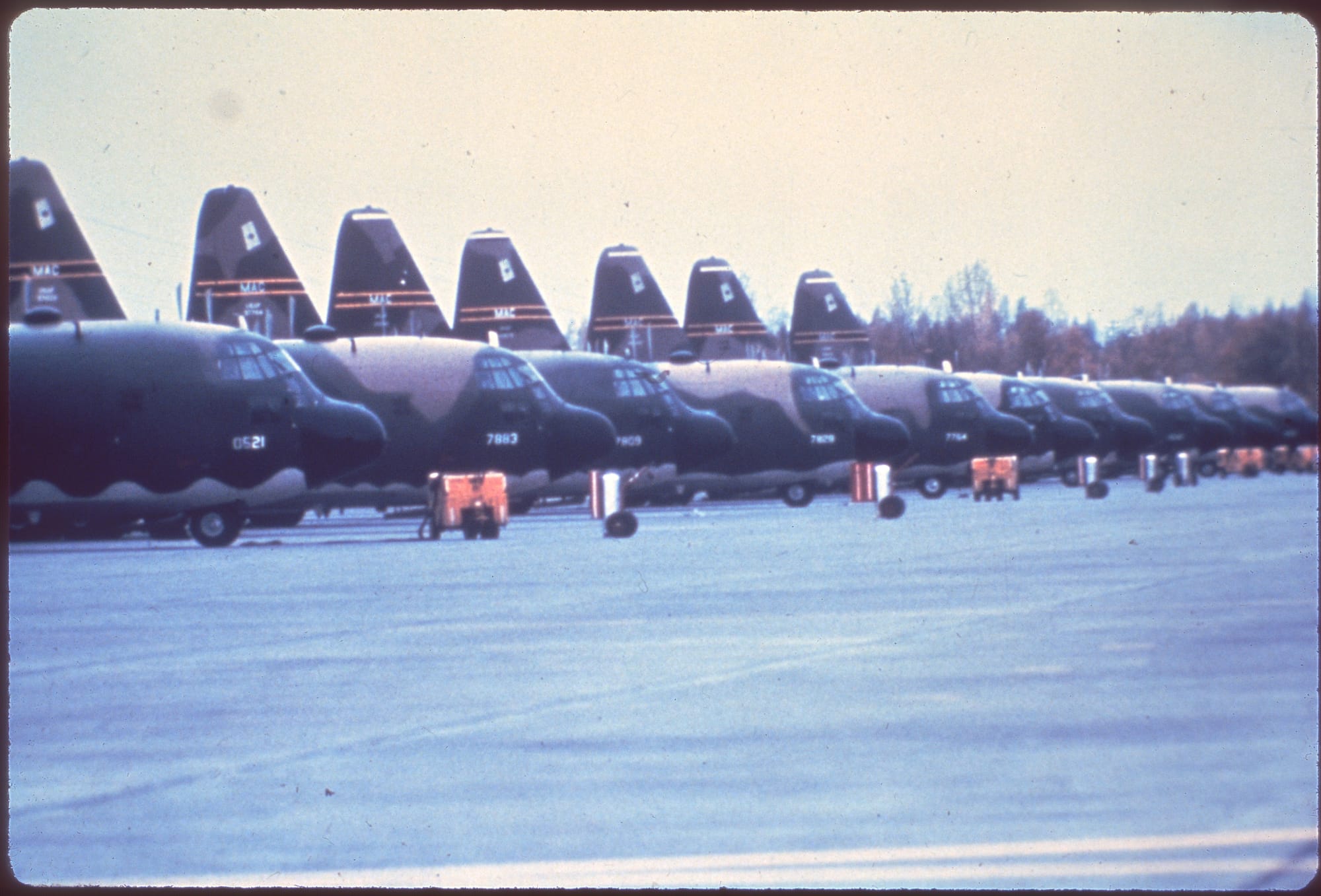


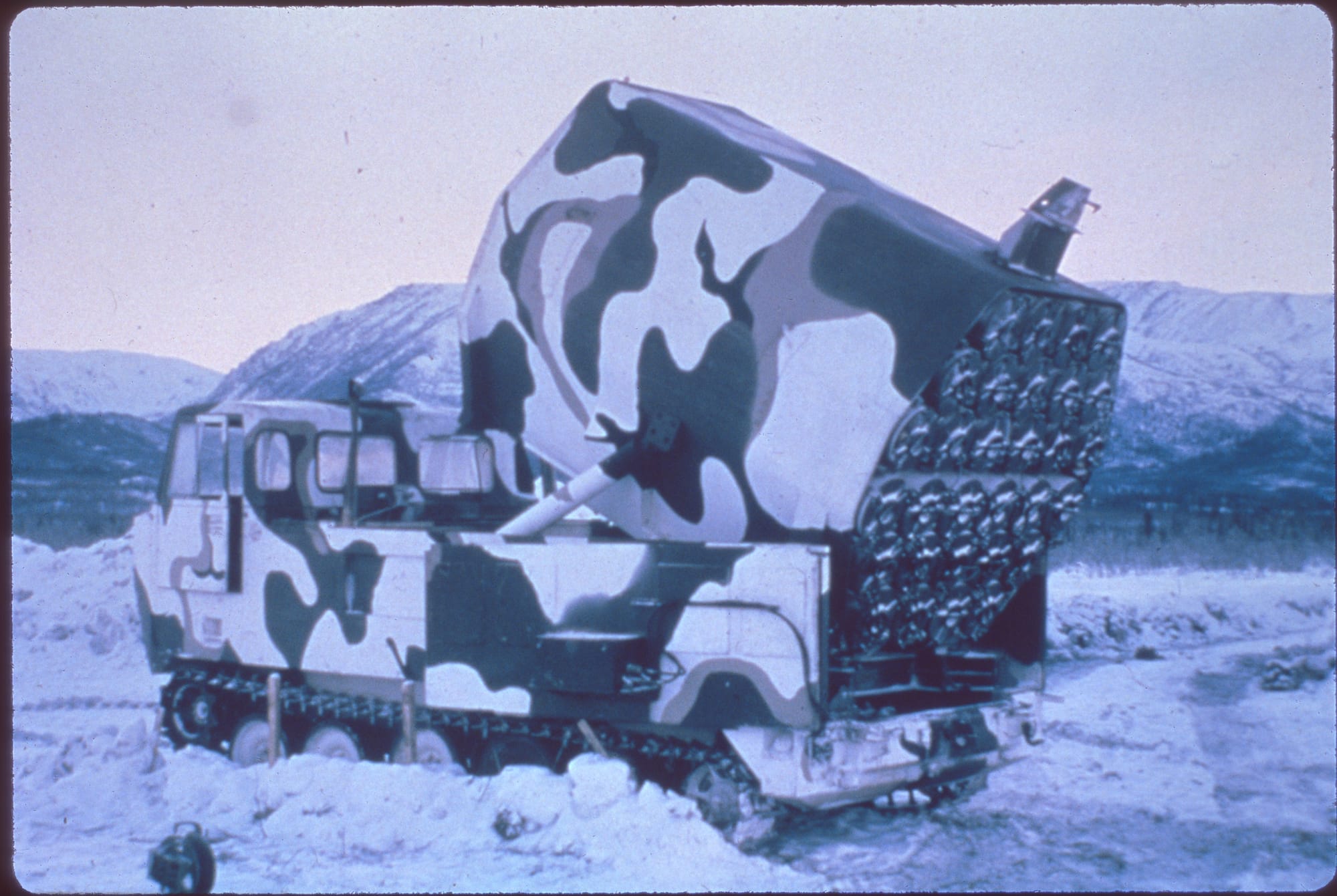

Photos of aircraft and military hardware from "The Slides"
Unit emblems
The many emblems from the different Air Force units found in these slides probably deserves a post of its own. Arrows, globes, stars, gauntlets and of course wings.



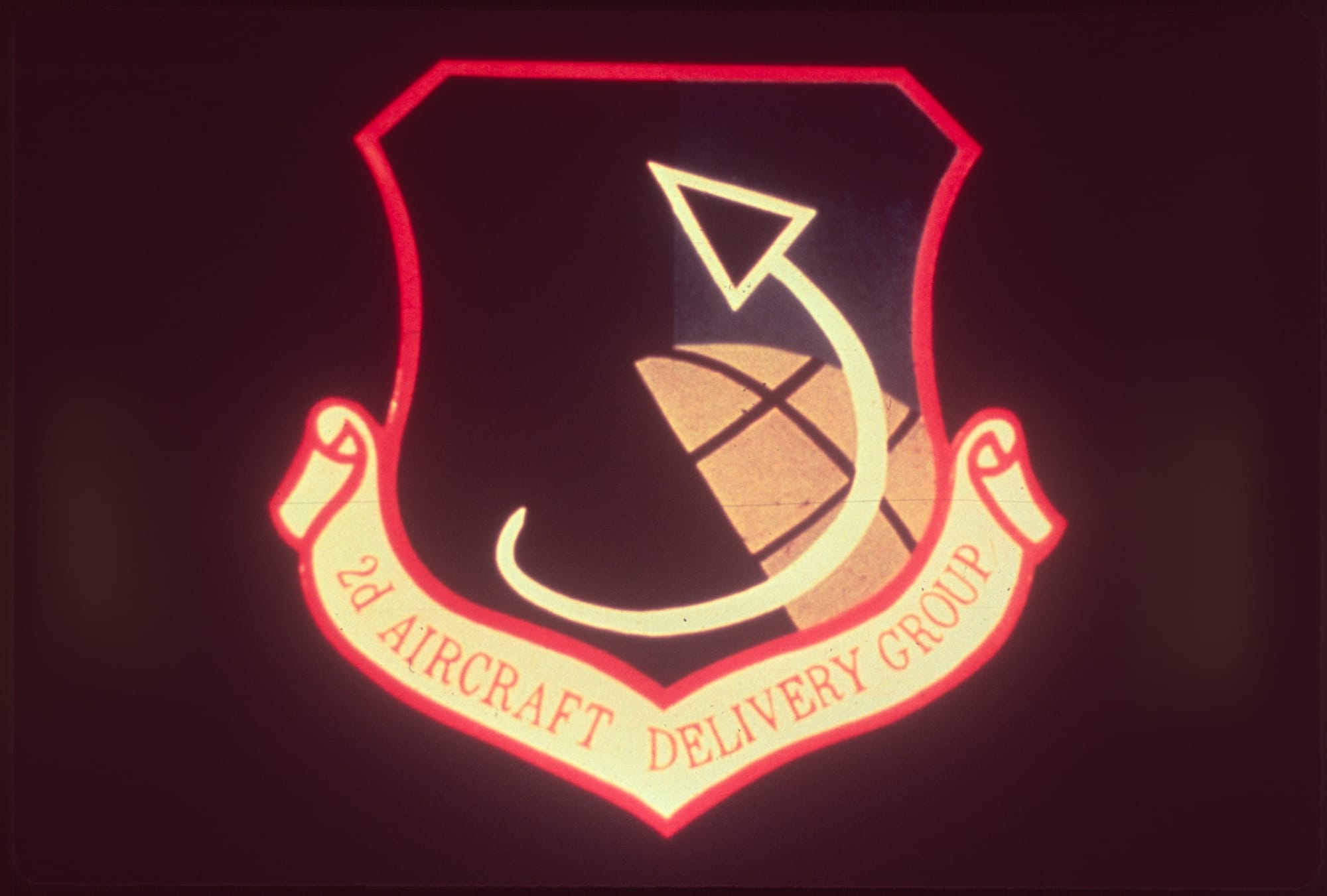
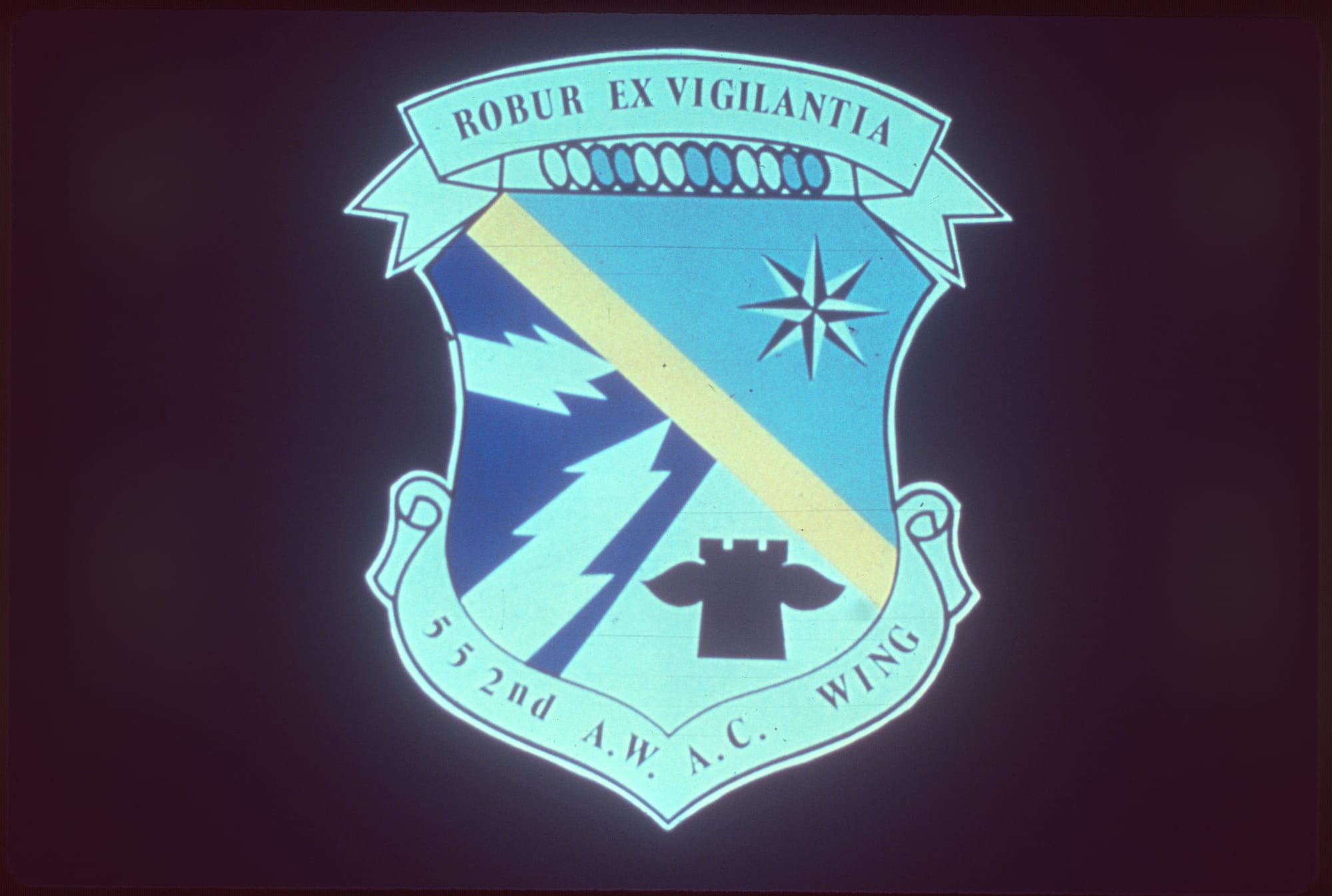
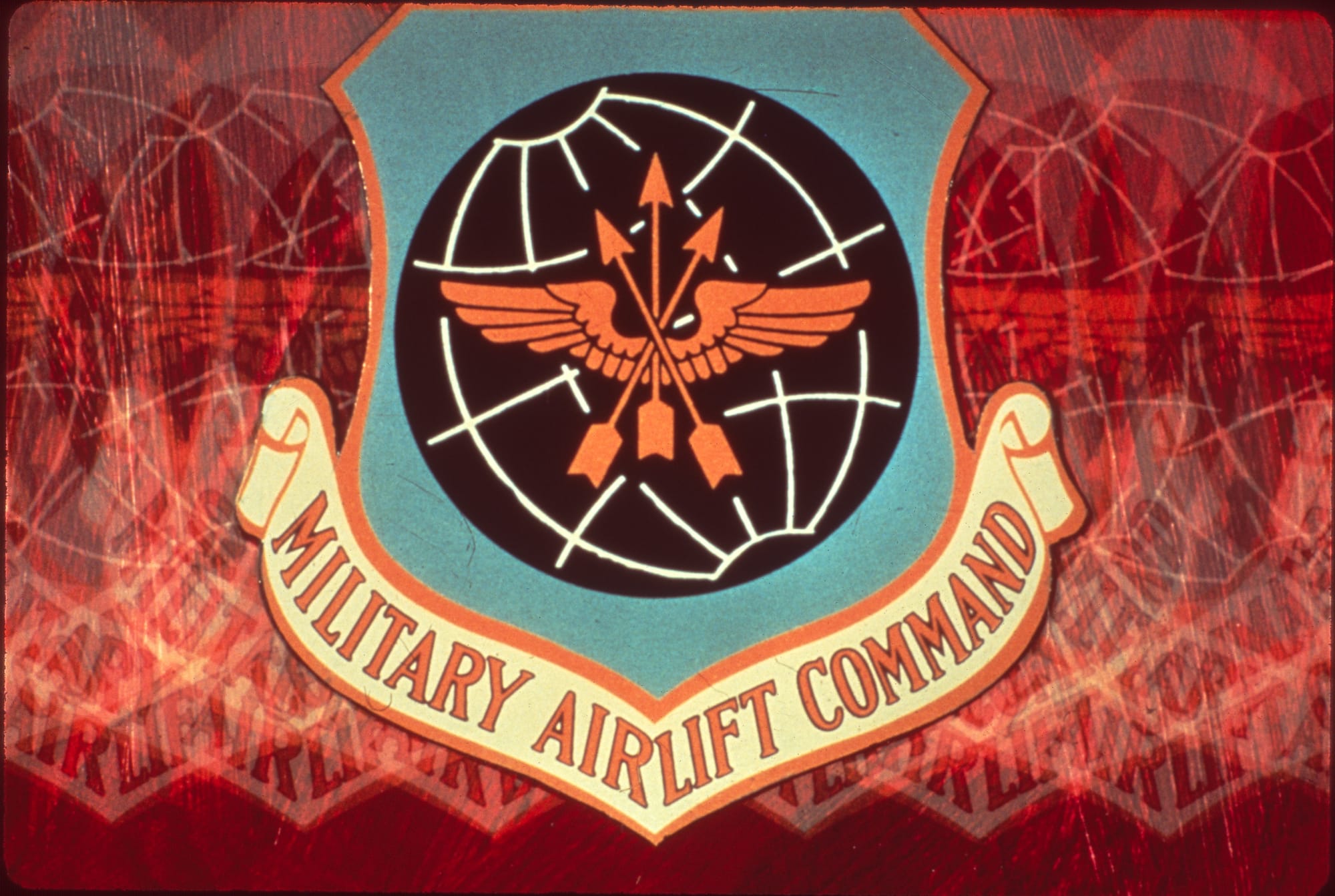
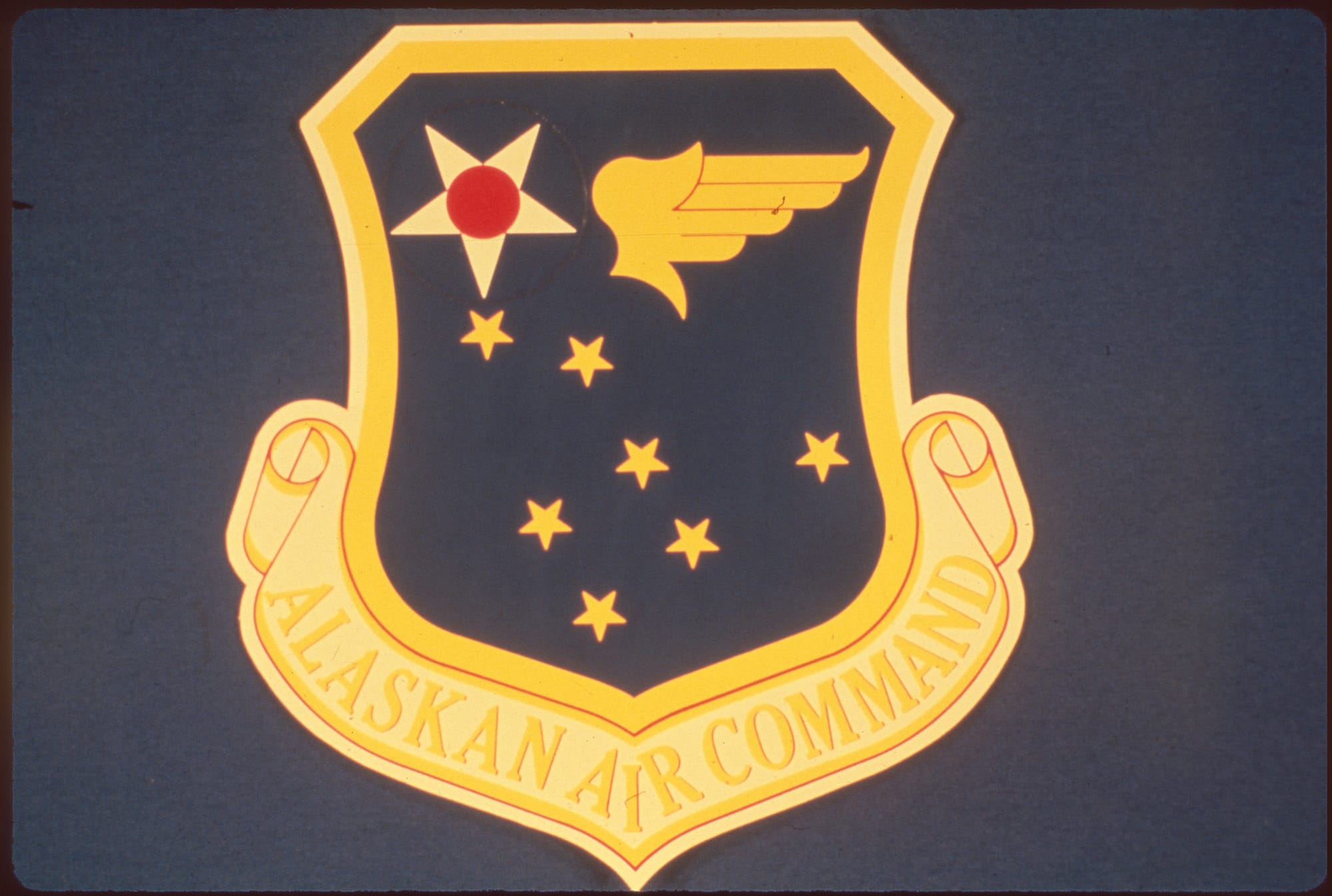
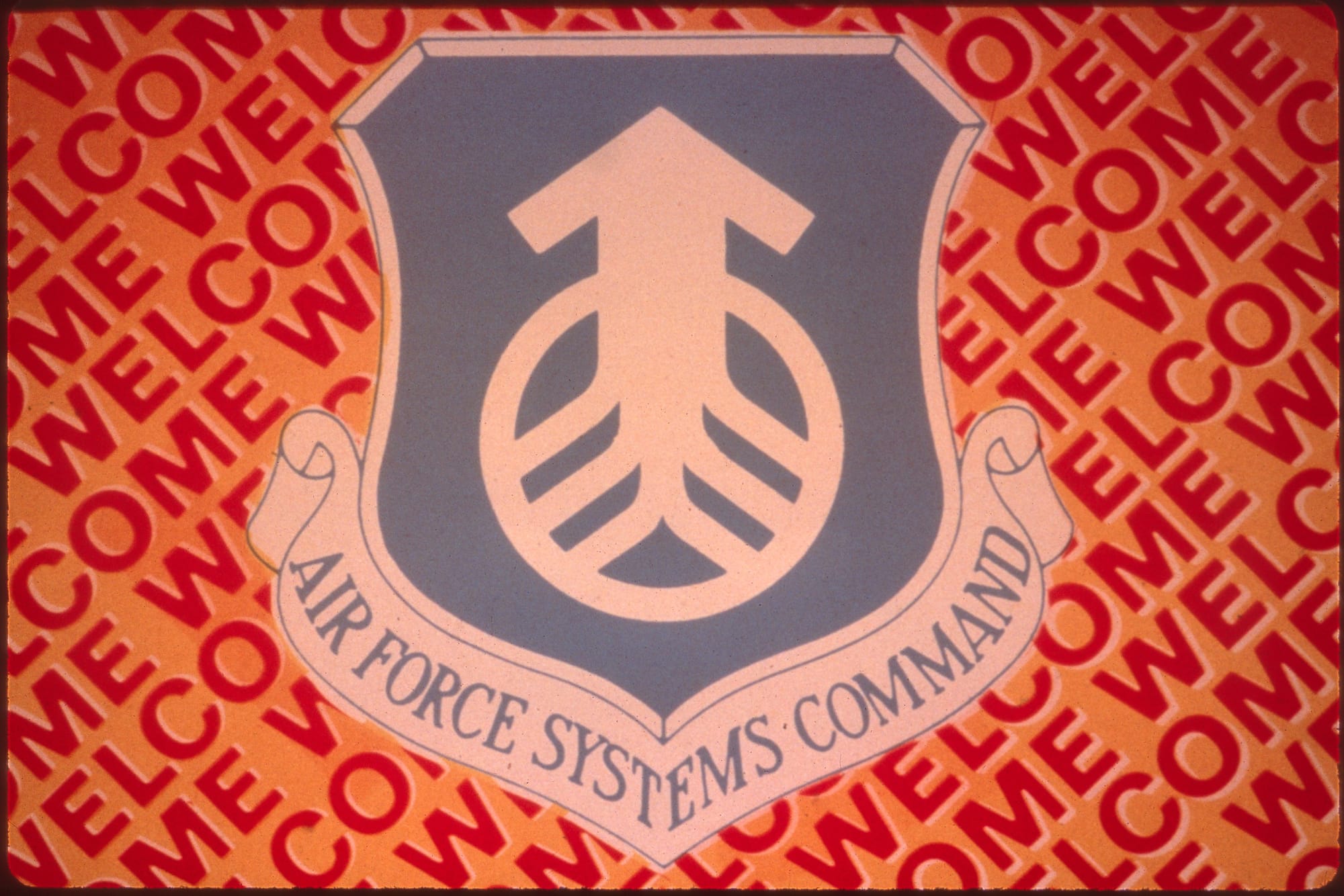
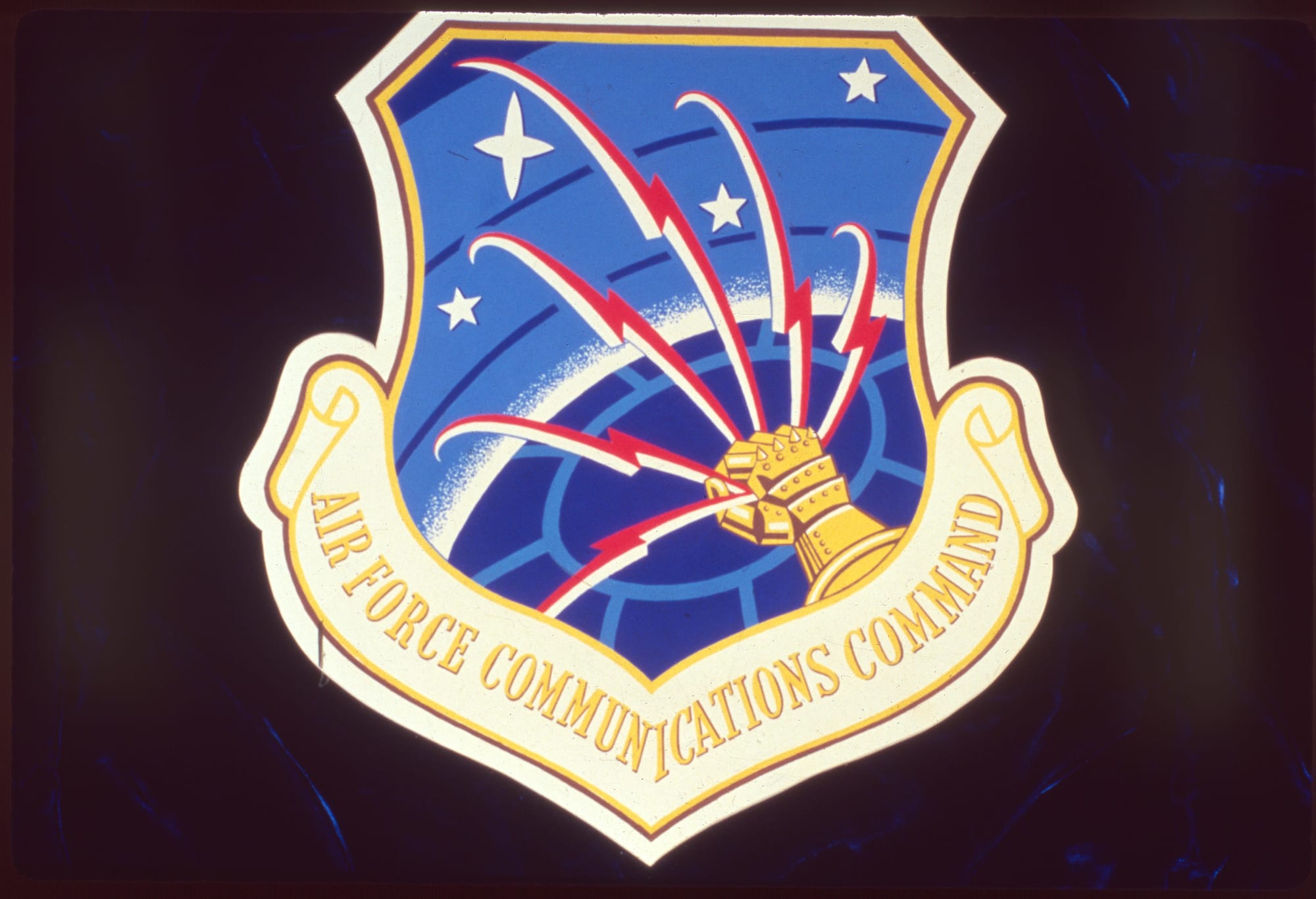
A collection of some of the Air Force unit emblems found on "The Slides."
Command and control
For decades, military personnel manned the controls of the US nuclear defense apparatus, hoping they would never have to use their training in real world scenarios. I always found the control room and command centers of these facilities to be fascinating. If you are ever in Tuscon, AZ be sure to visit the Titan Missile Museum to see some of these controls up close.
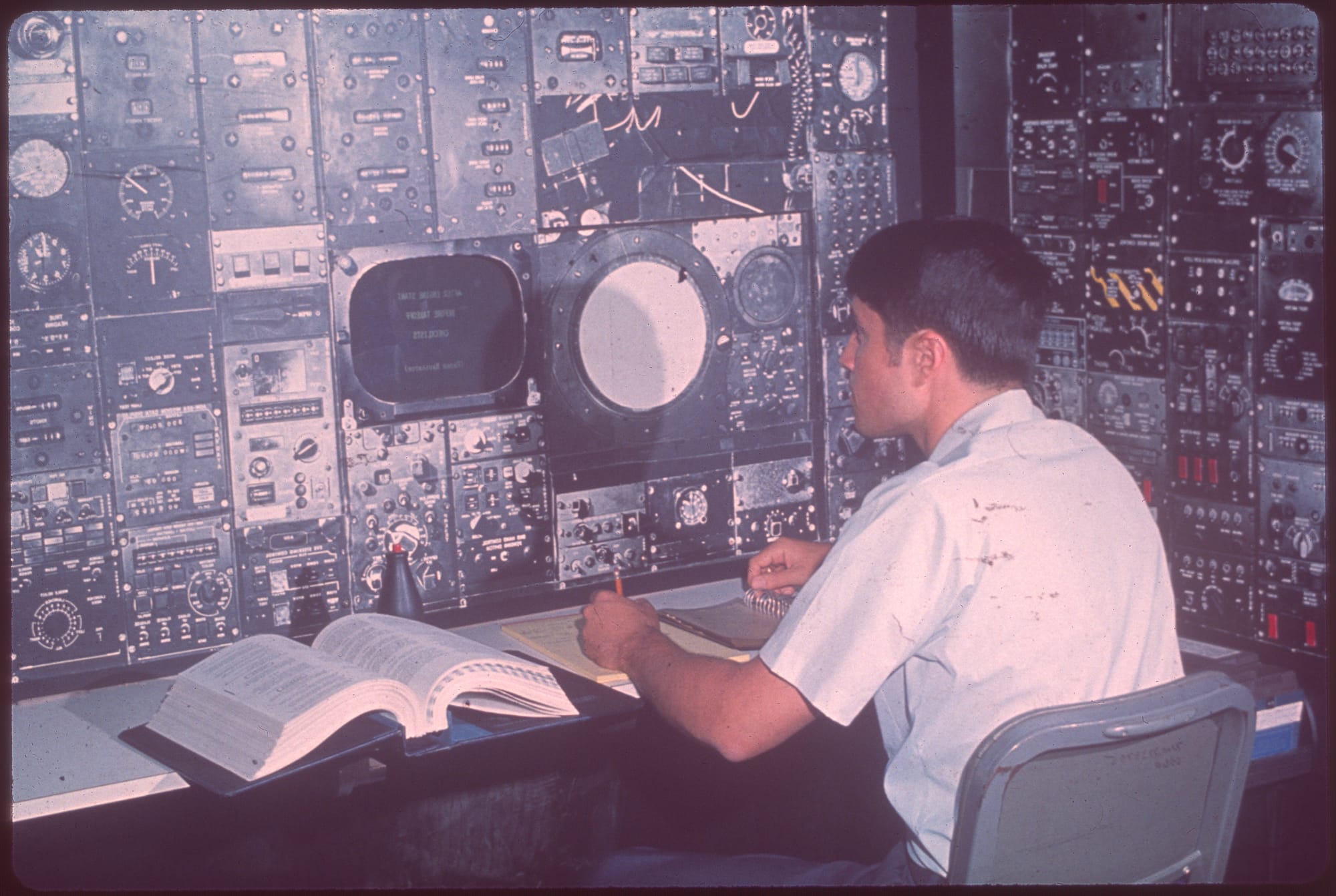
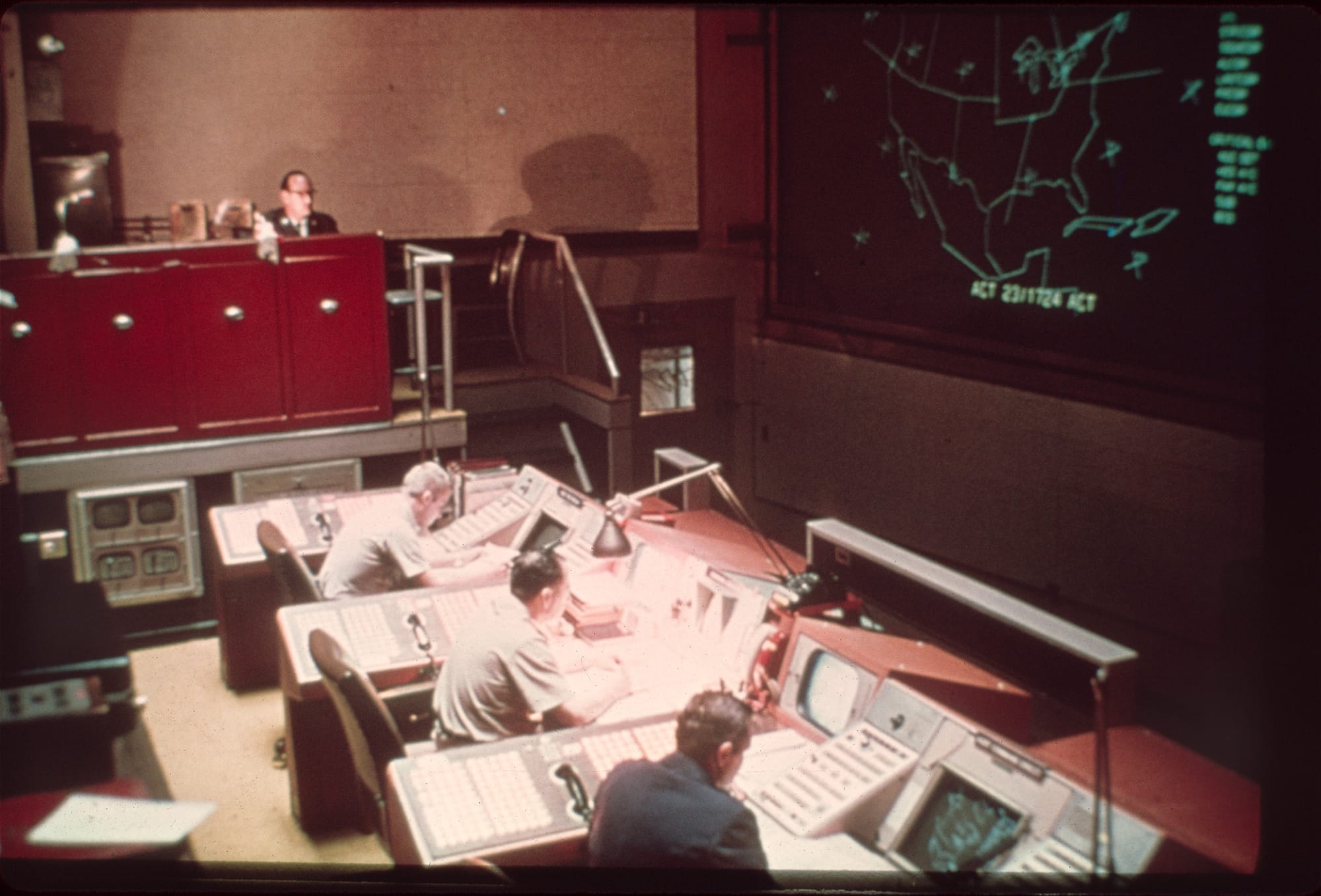
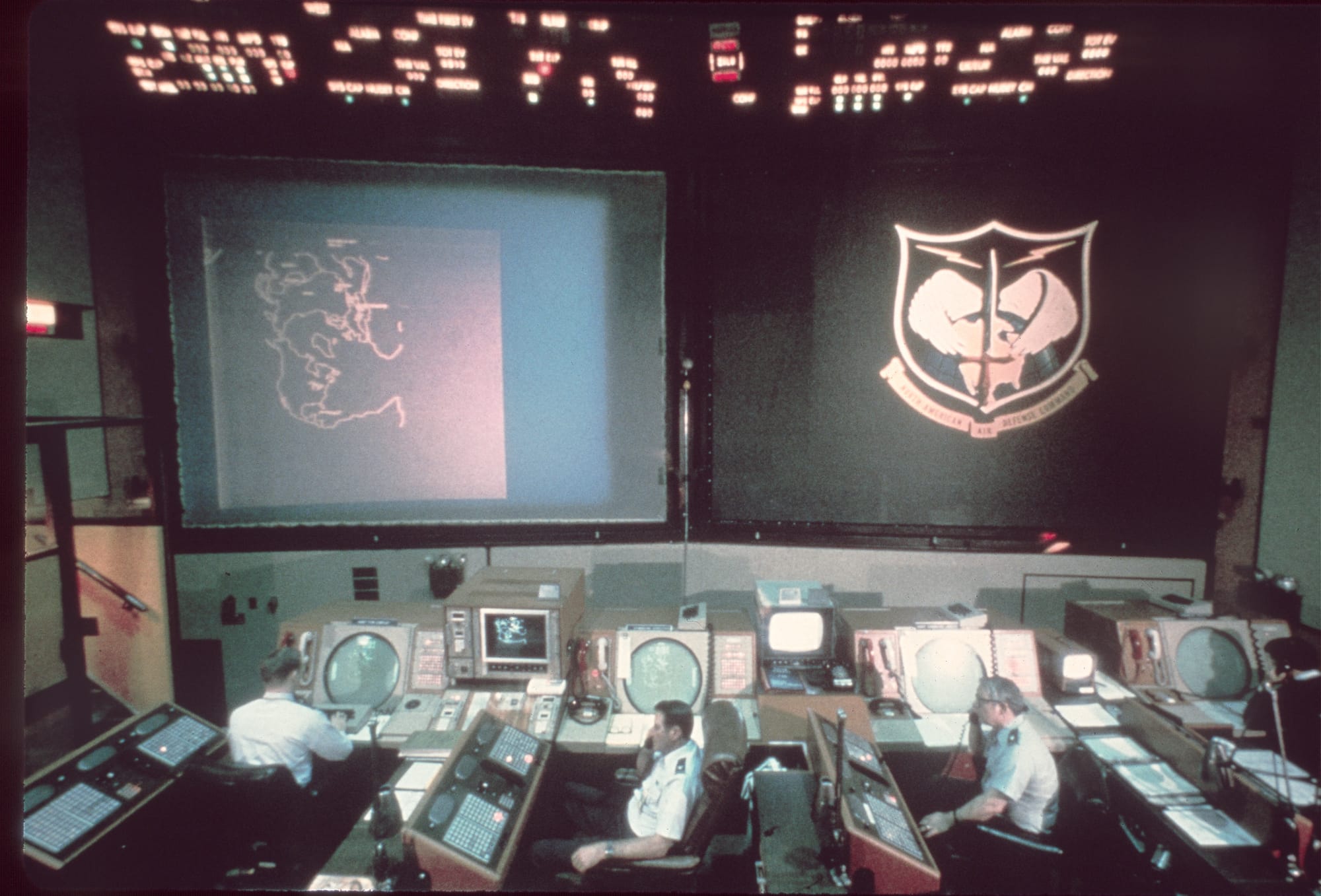

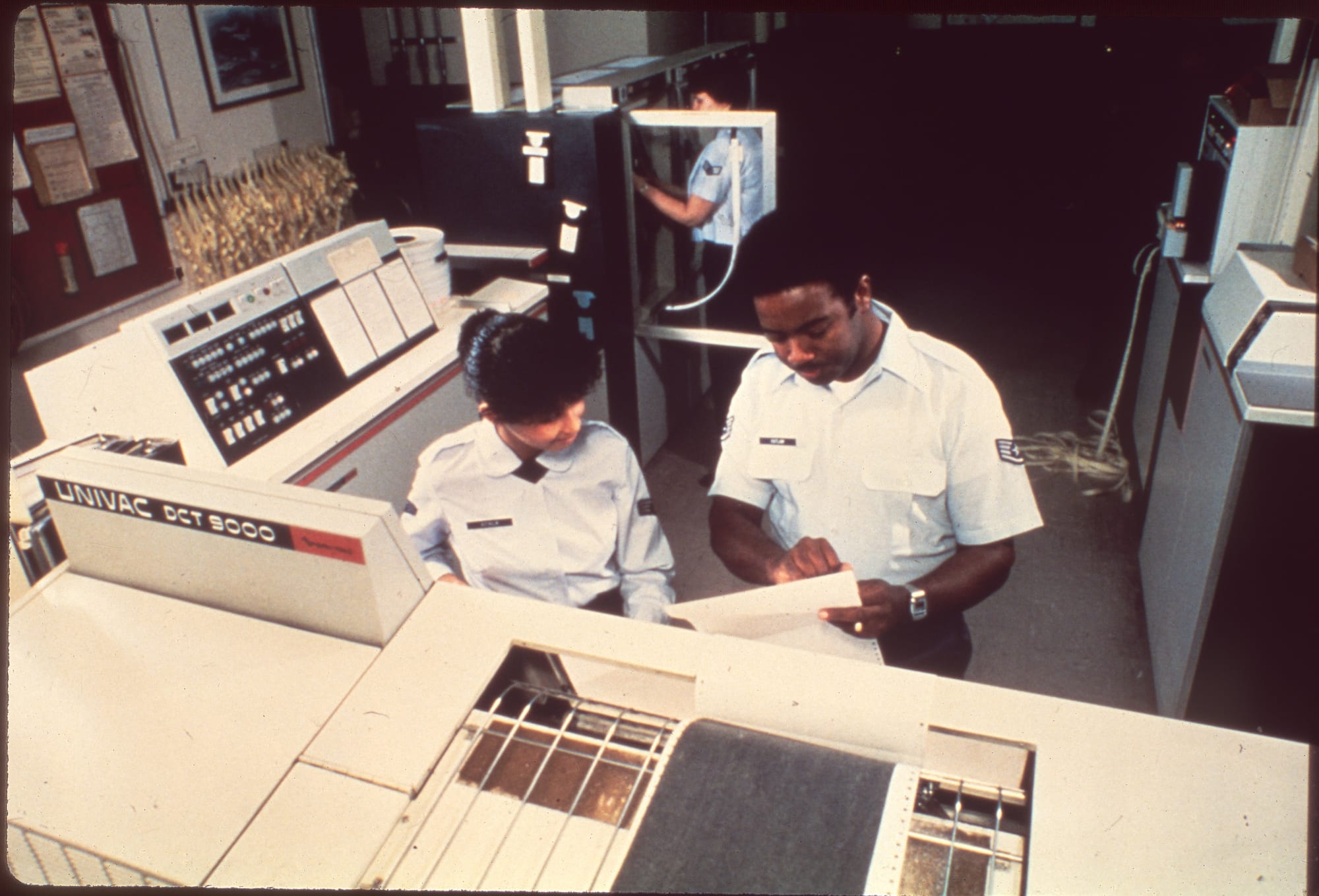
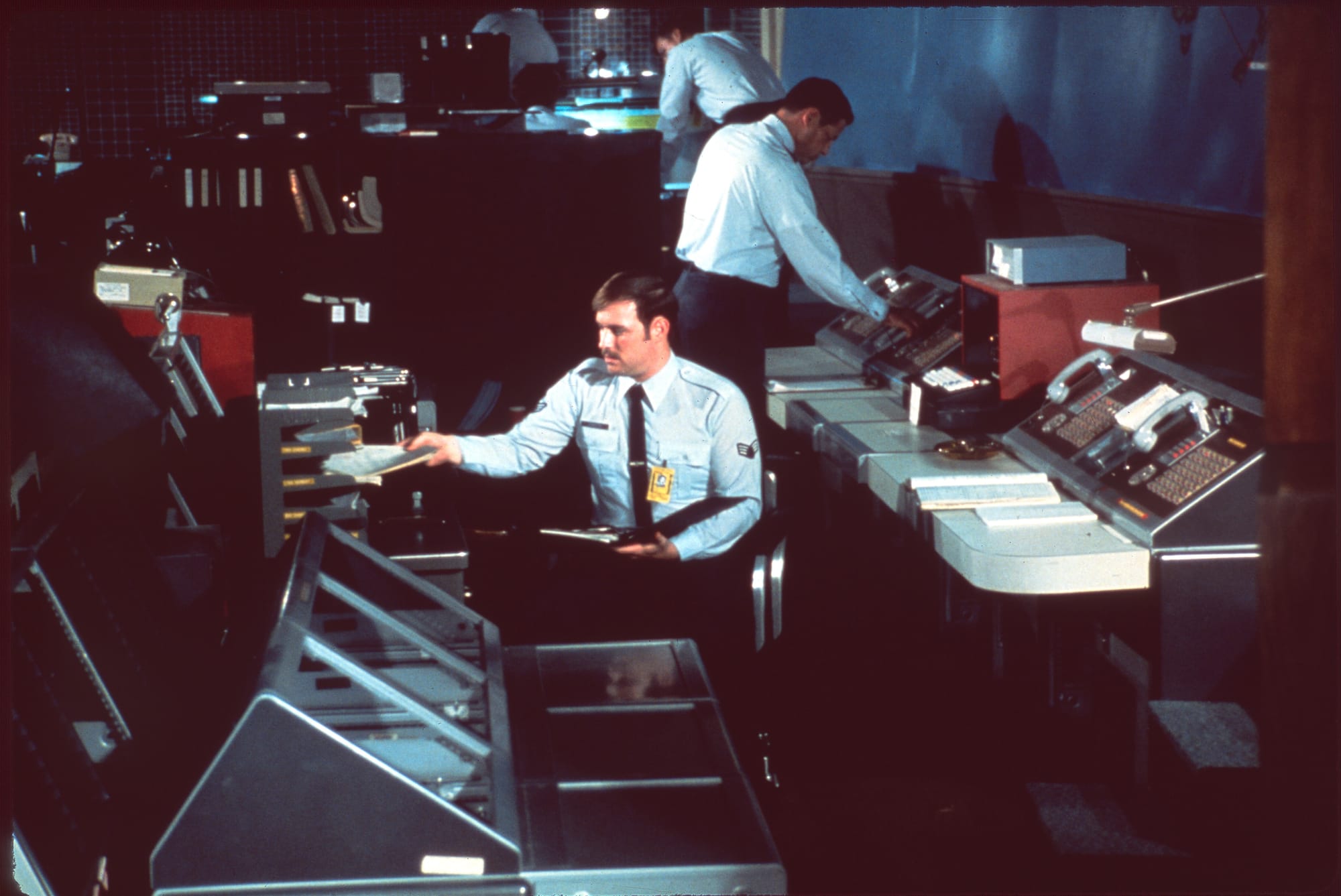
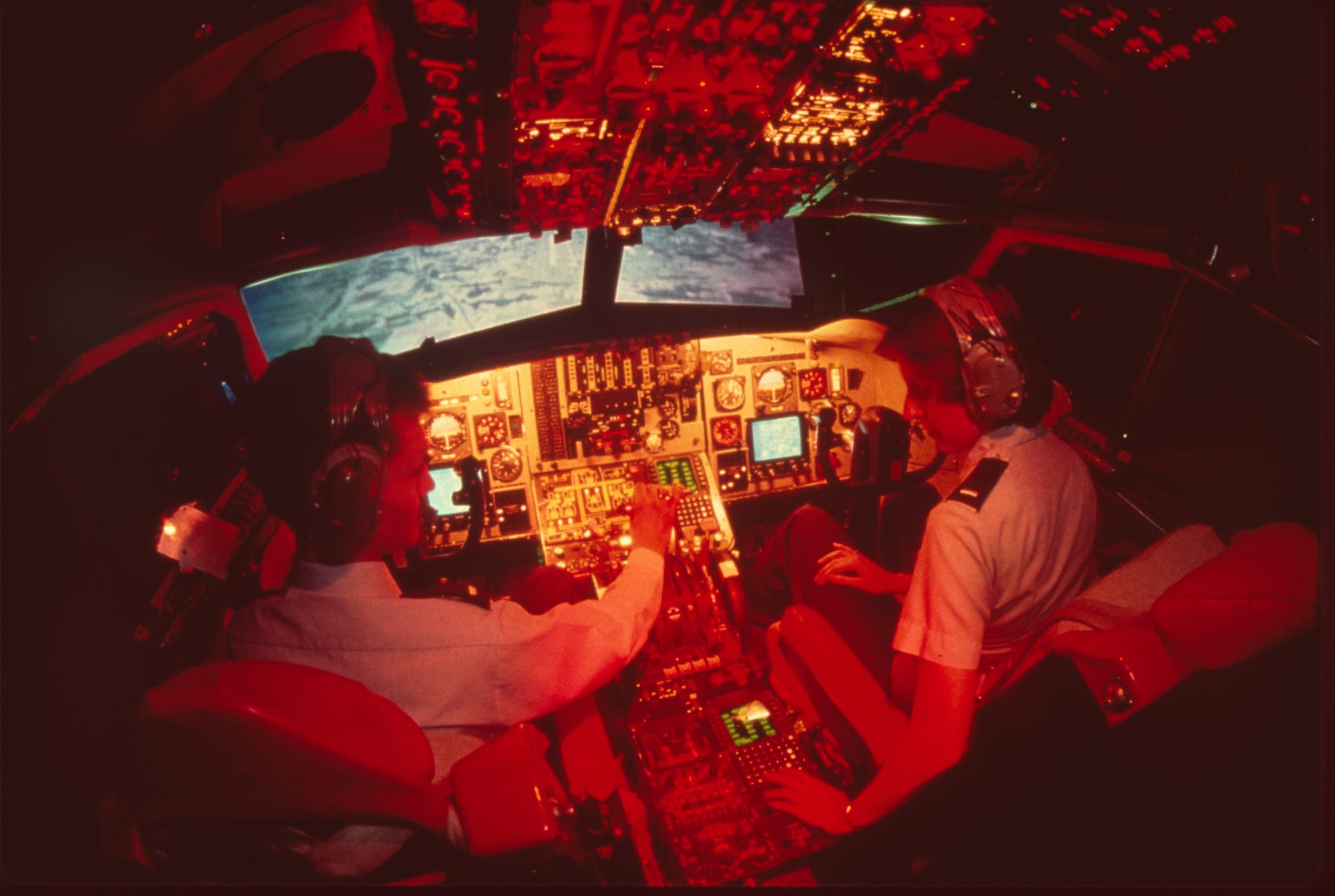

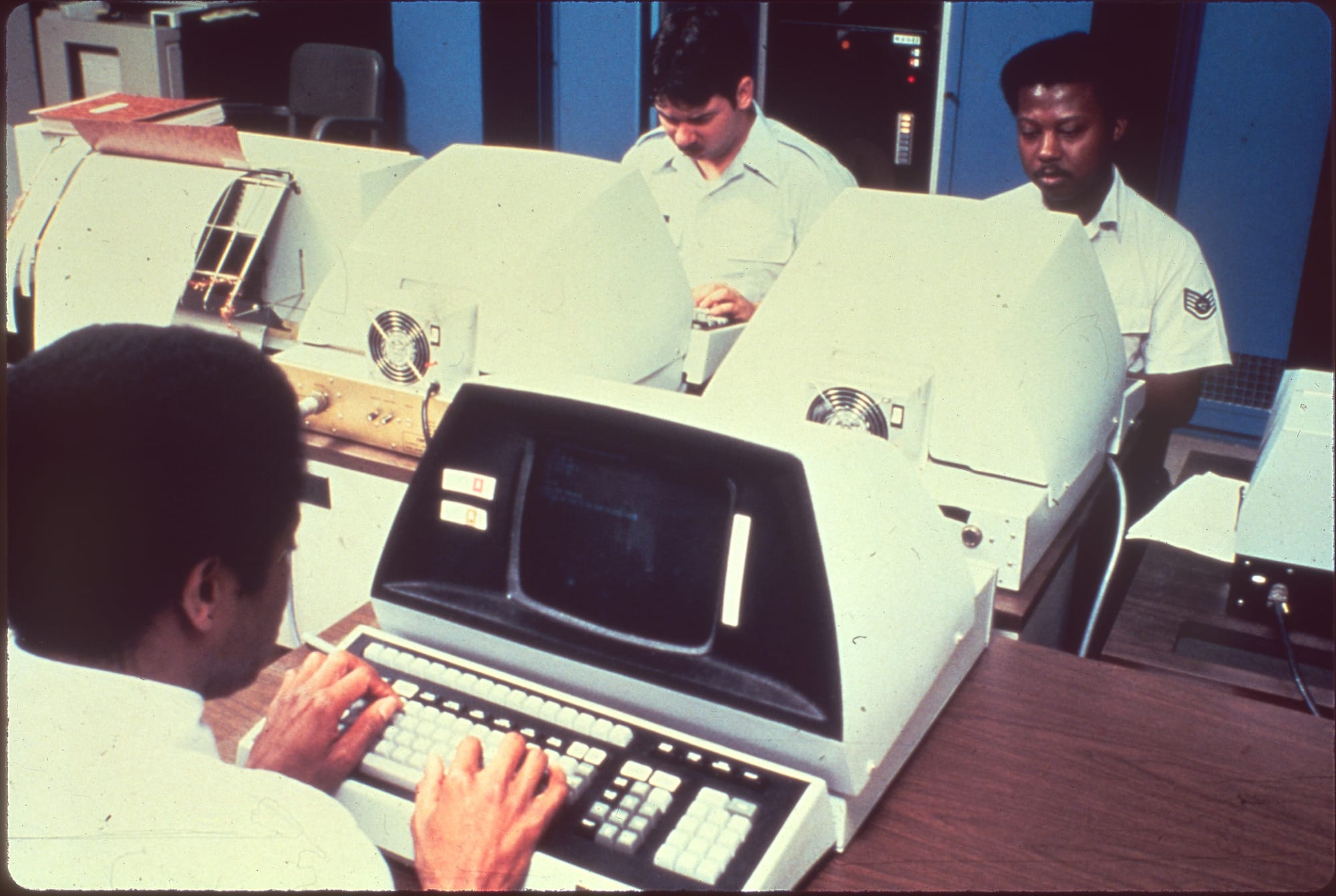
Photos of command centers found in "The Slides."
You can subscribe to our newsletter to get future posts delivered to your inbox for free. 👉🏻 📫 Subscribe now.
Sharing is caring
📣 If you think your followers or friends may like it, please consider sharing it.
🙋🏻♀️ If you have any suggestions, comments or requests, please email them to beautifulpublicdata@gmail.com
Thanks for reading!
- Jon Keegan
Bluesky: @jonkeegan.com
Mastodon: mastodon.social/@jonkeegan
Message me securely on Signal: jonkeegan.73

AIS Ship Movements Framed Prints
Ships at sea are constantly broadcasting their real-time location, identification, speed, and orientation data via AIS. Plotting out a years worth of ship movements (2023) reveals beautiful patterns of our journeys at sea. Ferries, fishing boats, cargo ships and sailboats' coordinates etch electric pathways in these stunning visualizations of NOAA data.
🚢 Adding new maps soon!

